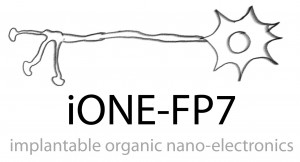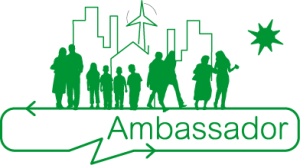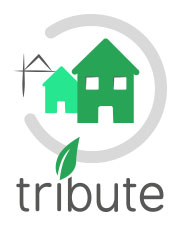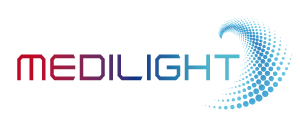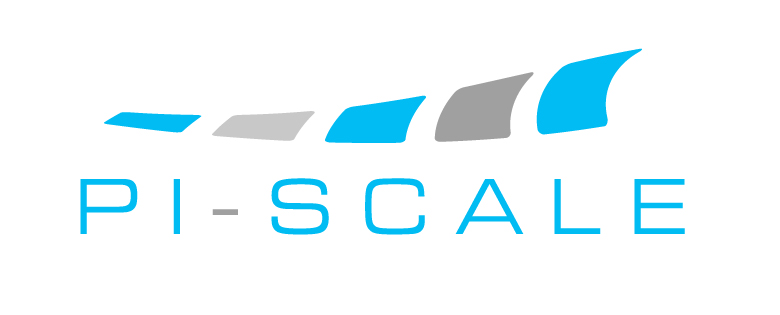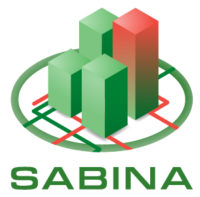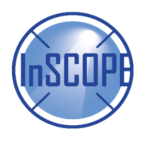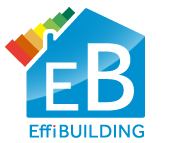AMIRES participated / participates in the following FP7, H2020 and HE projects:
iONE-FP7
|
|
Implantable Organic Nano-Electronics (iONE-FP7) |
|||
| Area | NMP | Starting date | 01/03/2012 | |
| Budget | € 5.1 M (EU contribution: € 3.8 M) | Duration | 36 months | |
Abstract:
The vision of iONE FP7 project is to develop and test for the first time flexible organic electronics for the development and testing of Active Multifunctional Implantable Devices (AMIDs) leading to treatment of Spinal Cord Injury (SCI).
The project will lead to device(s):
- having long-term stability associated to high biocompatibility and safety,
- having reduced risk of a host versus graft immune response,
- mimicking the local microenvironment for stem/precursor cell recruitment and differentiation,
- monitoring locally the functionality of the regenerated nerve cells to intervene with loco-regional therapies,
- performing local stimulation with tunable electric fields,
- delivering locally growth factors, neurotransmitters, and drugs.
The use of flexible organic electronics devices (ultra-thin film organic field effect transistor (FET), organic electro-chemical transistor, nanoparticle organic memory FET) will advance the state-of-the-art of implantable devices for SCI from passive to active layouts that will promote nerve regeneration by a combination of local stimuli delivered on demand, will sense inflammation, and will control the immune-inflammatory response.
The biomedical impact of the project will be demonstrated in vitro and in vivo. In vitro, the neural therapeutic plasticity induced by the iONE device will be evaluated on stem cells, which will be differentiated to neural progenitor cells, and then to neural cells. In vivo, the study of neural plasticity will be transferred to endogenous stem cells by implanting the iONE device into a contusion SCI animal model. iONE will acquire the knowledge and the technology required to regenerate the nerve in the niche of the injury.
AMIRES role:
AMIRES was involved in the project’s preparatory phase and in the negotiations. Within the project it is responsible for administrative project management and for dissemination of results.
Project partners: |
Contacts: |
|
Prof. Fabio Biscarini
Project Coordinator Email: f.biscarini(at)bo.ismn.cnr.it Rudolf Fryček, PhD. Project Manager Email: frycek(at)amires.eu Website: www.ione-fp7.eu |
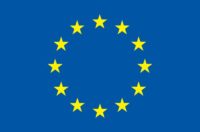 |
This project has received funding from the European Union Seventh Framework Programme Grant Agreement No. 280772, project iONE-FP7. |
UnivSEM
|
|
Universal scanning electron microscopy as a multi-nano-analytical tool (UnivSEM) |
|||
| Area | NMP | Starting date | 01/04/2012 | |
| Budget | € 4.7 M (EU contribution: € 3.6 M) | Duration | 36 months | |
Abstract:
The aim of the UnivSEM project is to develop a novel multimodal tool combining:
- a vision capability by integrating scanning electron (SEM), scanning probe (SPM) and optical microscopy (OM) thus enabling multimodal microscopy,
- a chemical analysis capability by time-of-flight secondary ion mass spectroscopy (TOF-SIMS) and energy dispersive X-ray (EDX),
- structural characterization by electron backscattered diffraction (EBSD),
- a non-destructive optical analysis capability by confocal Raman spectroscopy and cathodoluminescence (CL),
- a tomography capability by complementary use of novel 3D orthogonal TOF-SIMS, 3D EBSD and 3D confocal Raman tomography (the last method being non-destructive) thus enabling correlation between alternative 3D methods.
The proper resolution will be ensured by SEM column improvements, a new SPM design and OM type of Raman microscopy in SEM. Implementation of nano-scale 3D imaging, manipulation and non-destructive optical analysis in one universal instrument will represent a real breakthrough allowing simple operations or analyses in nanotechnology that are problematic or impossible nowadays.
The fully functional prototype of the new tool will demonstrate its unique modularity, resolution, data acquisition and simplification of working environment. Direct application of this multimodal tool is expected in many industrial quality controls and in R&D sectors (e.g. photovoltaics, plasmonics and cell-nanoparticle interaction).
AMIRES role:
AMIRES was involved in the project’s preparatory phase and in the negotiations. Within the project it is responsible for administrative project management and for dissemination of results.
Project partners: |
Contacts: |
|
Jaroslav Jiruše, PhD.
Project Coordinator Email: jaroslav.jiruse(at)tescan.cz Rudolf Fryček, PhD. Project Manager Email: frycek(at)amires.eu Website: www.univsem.eu |
 |
This project has received funding from the European Union Seventh Framework Programme Grant Agreement No. 280566, project UnivSEM. |
AMBASSADOR
Abstract:
To solve the energy dilemma, research effort was concentrated on stand-alone buildings weakly tight to their immediate environment. Specifically in each building only key sub-systems were considered individually. Such individual systems were made more effective by becoming pervasive into any building area (the reign of boxes and controllers). Importing parameters from other sub-systems allowed better regulations (Access or Occupancy management systems). Energy Usage Analysis tools are fairly new on the market. They provide the capability to analyse energy profiles of scattered buildings of large corporations. Energy usage analysis and planning on a district level is inexistent. Neither is Energy Usage Modelling leveraged in control schemes. This leaves an unexplored area for more effective building control schemes and suggests a potential of each smart building to contribute to District level energy optimization schemes, thanks to appropriate behavioural and stochastic models.
In parallel, efforts made many more renewable and cogeneration energy sources available as high capacity energy storage systems. Such systems now increasingly enter into the planning of large districts, but still timidly penetrate individual buildings. Thus, energy flows (electrical or thermal) can be managed through energy usage schemes, planned in time for significant savings.
To reach this aim, it is proposed to play in real time adaptive and predictive behavioural models of buildings and districts, exposed to weather conditions, human presence, energy-efficient materials and technologies. Such models will allow finding optimal supply/demand balancing. Building energy management systems will be turned in real-time configurable ones, bringing flexibility to the building. Thus, buildings will establish, in real-time, energy schemes with the district energy management and information system (DEMIS). AMBASSADORs vision: Flexible buildings to make eco-friendly districts.
AMIRES role:
AMIRES was involved in the project’s preparatory phase and in the negotiations. Within the project it is responsible for administrative project management and for dissemination of results.
Project partners: |
Contacts: |
|
Alfredo Samperio
Project Coordinator Email: alfredo.samperio(at)schneider-electric.com Lenka Bajarová Project and Dissemination Manager Email: bajarova(at)amires.eu Website: www.ambassador-fp7.eu |
 |
This project has received funding from the European Union Seventh Framework Programme Grant Agreement No. 314175, project AMBASSADOR. |
FLUIDGLASS
|
|
Solar Thermal Glass Facades with Adjustable Transparency (FLUIDGLASS) |
|||
| Area | Energy | Starting date | 01/09/2013 | |
| Budget | € 5.1 M (EU contribution: € 3.9 M) | Duration | 48 months | |
Abstract:
The FLUIDGLASS project develops a new and innovative concept for multifunctional solar thermal glass facades systems. The FLUIDGLASS approach turns passive glass facades into active transparent solar collectors while at the same time controlling the energy flow through the building envelope.
FLUIDGLASS unites four key functionalities in one integrated system: The system firstly acts as a fully transparent solar thermal collector, which enables harvesting of solar energy even in buildings with large glass share. It secondly acts as transparent insulation layer and thirdly controls the solar radiation transmission and inner glass surface temperature thus increasing the thermal user comfort and reducing the demand for heating, cooling and lighting. At the same time FLUIDGLASS substitutes conventional HVAC components such as cooling and heating panels.
Replacing four different systems by one, FLUIDGLASS brings a significant cost advantage compared to existing solutions.. FLUIDGLASS increases the thermal performance of the whole building resulting in energy savings potential of 50%-70% for retrofitting and 20%-30% for new low energy buildings while the comfort for the user is significantly improved at the same time. Compared to state-of-the-art solar collectors FLUIDGLASS has the elegant but neutral aesthetics of clear glass. This allows full design freedom for the architect in new built applications and enables retrofits that do not destroy the original look of an existing building.
The FLUIDGLASS system will be validated in different climate conditions. The consortium brings together partners experienced in glass architecture, building simulation and energy management but also in experimental testing, HVAC systems, manufacturing of glazing units and construction of facades. It is very well balanced between RTD and industrial sectors covering the whole innovation value chain of the future building skin and gives an important role to participating SMEs.
AMIRES role:
AMIRES was involved in the project’s preparatory phase and in the negotiations. Within the project it is responsible for administrative project management and for dissemination of results.
Project partners: |
Contacts: |
|
Dr. Volker Ritter
Project Coordinator Email: volker.ritter(at)uni.li Václav Smítka, Ph.D. Chief Process Officer and Programme Manager Email: smitka(at)amires.eu Website: www.fluidglass.eu |
 |
This project has received funding from the European Union Seventh Framework Programme Grant Agreement No. 608509, project FLUIDGLASS. |
TRIBUTE
|
|
Take the energy bill back to the promised building performance (TRIBUTE) |
|||
| Area | Energy-efficient buildings (EeB) | Starting date | 01/10/2013 | |
| Budget | € 9.9 M (EU contribution: € 6.7 M) | Duration | 48 months | |
Abstract:
Today, Building Energy Performance Simulation (BEPS) analysis tends to show a large discrepancy with real energy performance. Most cases are due to gross mistakes rather than fundamental inadequacy of available technology and methods. The reasons are manifold. Highly simplified calculation methods are used far beyond their domain of validity. Assumed boundary conditions such as occupant behaviour are not in accordance with actual usage; gross malfunctions in control and HVAC systems are left undetected in the commissioning process, while thermal bridges and distribution system losses are left without attention. Moreover, metered and sub-metered data are not used efficiently in calculation tools and engineering based simulation models during the Measurement and Verification (M&V) phase.
TRIBUTE aims at minimizing the gap between computed and measured energy performances through the improvement of the predictive capability of a state-of-the-art commercial BEPS. TRIBUTE will extend the use of this tool to the commissioning and operation stages of a building. For existing buildings, M&V techniques will be developed and deployed to connect the BEPS model in real time to the pivotal wireless sensing and control systems of a monitored building. This involves modelling building systems to a higher fidelity than done today, developing technology for on-line identification of building key parameters, and automatically adapting the on-line, real time BEPS to the actual building’s state.
In addition, BHM and EFM application will compare measured data to the then improved predicted metrics and will enable detecting building deviations. Advanced data mining methods will help evaluate these deviations. Subsequent Energy Efficiency Diagnostic Rules and optimization methods will provide cost effective and corrective retrofit actions accordingly.
The methodology and tools will be evaluated in the context of three different building types and locations.
AMIRES role:
AMIRES was involved in the project’s preparatory phase and in the negotiations. Within the project it is responsible for administrative project management and for dissemination of results.
Project partners: |
Contacts: |
|
Martin Sénéclauze
Project Coordinator Email: martin.seneclauze(at)csem.ch Henri Obara Scientific Coordinator Email: henri2.obara(at)schneider-electric.com Václav Smítka, Ph.D. Chief Process Officer and Programme Manager Email: smitka(at)amires.eu Website: www.tribute-fp7.eu |
 |
This project has received funding from the European Union Seventh Framework Programme Grant Agreement No. 608790, project TRIBUTE. |
LASSIE-FP7
|
|
Large Area Solid State Intelligent Efficient luminaires (LASSIE-FP7) |
|||
| Area | Photonics (FP7-ICT) | Starting date | 01/01/2014 | |
| Budget | € 4.4 M (EU contribution: € 3.2 M) | Duration | 36 months | |
Abstract:
According to a recent study, many solid-state lighting (SSL) products do not fulfill the claimed specifications and a deep market penetration of LED modules is at risk. The main problems are decreasing light intensity and varying light chromaticity due to aging and temperature, as well as poor uniformity of large-area luminaires and poor lighting quality. The main objective of the LASSIE-FP7 consortium is to implement large-area and low-cost intelligent SSL modules with high efficiency and high lighting quality, while assessing their environmental impact over the life cycle. LED-based point source luminaires have been already investigated, but market requirements for intelligent, large-area solid-state light sources have not been met yet. In order to achieve luminaires with high intensity, good uniformity and high color rendering performance, significant intelligence has to be added to the LEDs. By integrating light management structures combined with new color-changing coatings containing highly efficient and reliable organic fluorescent dyes with heat management solutions, LED chips and multispectral sensors for intelligent color-sensing feedback by means of an innovative R2R production technology compatible with flexible substrates, the LASSIE-FP7 consortium will achieve progresses beyond the state-of-the-art in terms of size (area and thickness), flexibility, efficiency, lighting quality, beam-shaping, lifetime, added intelligence, production and production/installation costs. Outcome of the project will be a unique integrated SSL module that will represent a break-through in the professional and architectural lighting sectors and an alternative to the OLED technology.
AMIRES role:
AMIRES was involved in the project’s preparatory phase and in the negotiations. Within the project it is responsible for administrative project management and for dissemination of results.
Project partners: |
Contacts: |
|
Dr. Rolando Ferrini
Project Coordinator Email: Rolando.FERRINI(at)csem.ch Lenka Bajarová Project and Dissemination Manager Email: bajarova(at)amires.eu Website: www.lassie-fp7.eu |
 |
This project has received funding from the European Union Seventh Framework Programme Grant Agreement No. 619556, project LASSIE-FP7. |
MEDILIGHT
|
|
Miniaturized smart system for light stimulation and monitoring of wound healing |
|||
| Area | Smart System Integration (H2020-ICT) | Starting date | 01/02/2015 | |
| Budget | € 3 M (EU contribution: € 2.5 M) | Duration | 36 months | |
Abstract:
Chronic wounds represent a significant burden to patients, health care professionals, and health care systems, affecting over 40 million patients and creating costs of approximately 40 billion € annually. Goal of the project is the fabrication of a medical device for professional wound care. The device will use recently proven therapeutic effects of visible light to enhance the self-healing process and monitor the status and history of the wound during therapy. Light exposure in the red part of the spectrum (620-750nm) induces growth of keratinocytes and fibroblasts in deeper layers of the skin. The blue part of the spectrum (450–495nm) is known to have antibacterial effects predominantly at the surface layers of the skin. In order to be compliant with hygiene requirements the system will consist of two parts: 1. a disposable wound dressing with embedded optical waveguides and integrated sensors for the delivery of light and monitoring (temperature and blood oxygen) at the wound. 2. a soft and compliant electronic module for multiple use containing LEDs, a photodiode, a controller, analog data acquisition, a rechargeable battery, and a data transmission unit. Both parts of the device will be interconnected by a mechanically robust plug, enabling a low loss coupling of light into the waveguide structures and electrical interconnection to the sensors. The status of the wound will be monitored with temporal and low level spatial resolution. The electronic module will be optimized for functionality and user comfort, combining leading edge heterogeneous integration technologies (PCB embedding) and stretchable electronics approaches. The detailed effects of light-exposure schemes will be explored and backed by in-vitro and in-vivo animal studies. Results will be used to develop smart algorithms and implement it into respective programs and feedback loops of the device.
AMIRES role:
AMIRES was involved in the project’s preparatory phase and in the negotiations. Within the project it is responsible for administrative project management and for dissemination of results.
Project partners: |
Contacts: |
|
Dr. Dionysios Manessis
Project Coordinator Email: Dionysios.Manessis(at)tu-berlin.de Martina Nešverová Project and Dissemination Manager Email: nesverova(at)amires.eu Website: www.medilight-project.eu |
 |
This project has received funding from the European Union’s Horizon 2020 research and innovation programme under grant agreement no. 644267, project MEDILIGHT. |
ULTRAPLACAD
|
|
ULTRAsensitive PLAsmonic devices for early CAncer Diagnosis |
|||
| Area | Health (PHC-10-2014 Development of new diagnostic tools and technologies) |
Starting date | 01/05/2015 | |
| Budget | €6.03M | Duration | 42 months | |
Abstract:
Cancer biomarkers circulating in body fluids have been shown to reflect the pathological process and for this reason can be used for cancer diagnosis, prognosis and choice for therapeutic interventions. It is proven that their detection is a key to new minimal-invasive detection approaches. However, barriers to wide spread use of similar approaches are lack of test sensitivity, specificity and limited availability of low cost detection platforms. This project is focused at developing a compact plasmonic-based device with integrated microfluidic circuit and functionalized nanostructures for the detection of DNA, microRNA and tumor autoantibodies cancer biomarkers. The aim is to detect cancer biomarkers circulating in blood with improvement in sensitivity of factor up to 1000, reduction in cost of platform of factor ranging from 2 to 4 compared to today’s available techniques and analysis time less than 60 minutes. The proposed detection approach will provide ultrasensitive detection of biomolecular systems with no need for complex sample chemical modifications thus allowing direct and simple assays to be performed. Within the project a bimodal industrial prototype will be developed integrating novel surface plasmon resonance imaging and plasmon enhanced fluorescence sensing technologies, respectively. Automated fabrication processes suitable for low cost mass production will be developed and applied to produce disposable integrated chips. Prototype will be specifically fabricated for early diagnosis and prognosis of colorectal cancer. The team includes partners holding cross-disciplinary competencies needed to achieve the proposed results, including two of the first five plasmon resonance groups in the world, the inventor of surface plasmon microscopy – also known as surface plasmon resonance imaging- and plasmon-enhanced fluorescence spectroscopy, and full European value chain including disposable chip and readout platforms design, development and manufacturing.
AMIRES role:
AMIRES was involved in the proposal preparation and in the project’s preparatory phase. Within the project it is responsible for administrative and financial project management. AMIRES will support coordination of project meetings (including External Advisory Board meetings), dissemination (e.g. webpage, press releases, leaflets, clustering activities) and exploitation (enlarge the impact of the developed know-how, support to companies and provide liaison with other SMEs and industries).
Project partners: |
Contacts: |
|
Prof. Giuseppe Spoto
Project Coordinator Email: spotog(at)unict.it Lenka Bajarová Project and Dissemination Manager Email: bajarova(at)amires.eu Website: www.ultraplacad.eu |
 |
This project has received funding from the European Union’s Horizon 2020 research and innovation programme under grant agreement no. 633937, project ULTRAPLACAD. |
WASCOP
|
|
WAter Saving for Solar COncentrated Power |
|||
| Area | Energy | Starting date | 01/01/2016 | |
| Budget | € 5,95 M | Duration | 48 months | |
Abstract:
Concentrating Solar Power is one of the most promising and sustainable renewable energy and is positioned to play a massive role in the future global generation mix, alongside wind, hydro and solar photovoltaic technologies. Although there is definitely perspective for the technology for rapid grow, success of CSP will ultimately rely on the ability to overcome obstacles that prevent its mass adoption, especially the large financial demand and limited accessibility of water. Water saving is therefore one of the major issues to ensure a financially competitive position of CSP plants and their sustainable implementation. To overcome such challenges, WASCOP brings together leading EU and Moroccan Institutions, Universities, and commercial SMEs and industry. They join their forces to develop a revolutionary innovation in water management of CSP plants – flexible integrated solution comprising different innovative technologies and optimized strategies for the cooling of the power-block and the cleaning of the solar field optical surfaces. WASCOP main advantage consists in the ability to reflect and adapt to the specific conditions prevailing at individual CSP plants, unlike other competitive approaches proposing a single generic solution applicable only on some referenced cases. The WASCOP holistic solution provides an effective combination of technologies allowing a significant reduction in water consumption (up to 70% – 90%) and a significant improvement in the water management of CSP plants. To demonstrate the benefits (whether economic or environmental), the developed system will be tested and validated in real conditions of four testing sites in France, Spain and Morocco after preliminary demonstration in laboratory environment.
AMIRES role:
AMIRES was involved in the project’s preparatory phase and in the negotiations. Within the project it is responsible for administrative project management, communication and dissemination of results.
Project partners: |
Contacts: |
|
Delphine Bourdon
Project Coordinator Email: delphine.bourdon(at)cea.fr Václav Smítka Ph.D. Project Manager Email: smitka(at)amires.eu Website: www.wascop.eu |
 |
This project has received funding from the European Union’s Horizon 2020 research and innovation programme under grant agreement no. 654479, project WASCOP. |
PI-SCALE
|
|
Bringing Flexible Organic Electronics To Pilot Innovation Scale | |||
| Area | Cross-cutting ICT KETs (ICT-28-2015) | Starting date | 01/01/2016 | |
| Budget | € 15,71 M (EU contribution: € 13,99 M) | Duration | 36 months | |
Abstract:
“Bringing flexible organic electronics to pilot innovation scale” (PI-SCALE) is a highly needed response to bridge the gap which exists today between promising laboratory scale results of highly efficient flexible OLED modules and mass manufacturing of high value-added products. The project will integrate existing European infrastructures into a “European flexible OLED pilot line”, which will operate in an open access mode and serve customers from along the value chain with individual product designs, validation of upscaling concepts, and system-level flexible OLED integration. The Consortium will connect the most advanced pilot line facilities with the best material providers and equipment manufacturers, creating a service that will offer substantial numbers of flexible OLEDs that can meet efficiency, durability and cost requirements of end users. Together with end-users for various markets, such as automotive and designer luminaires, PI-SCALE will demonstrate the capabilities of this pilot line doing process optimisation for product demonstrators to enable cost efficient production and facilitate an effective market introduction. In addition, PI-SCALE will include a number of outreach activities to actively engage and educate interested users and suppliers for flexible OLEDs in interactive product concept development. PI-SCALE will not only support the market acceptance of flexible OLED products, but it will also ensure that prototype ideas from European companies will have the possibility of reaching a semi-industrial scale in a very short time. The PI-SCALE project is funded by one of the calls under the Photonics Public Private Partnership (PPP). Pilot Line projects represent a significant investment from the Photonics Public Private Partnership and as such PI- SCALE will coordinate its publicity activities with the other pilot lines projects where it helps to have jointly a greater impact.
AMIRES role:
AMIRES was involved in the project’s preparatory phase and in the negotiations. Within the project it is responsible for administrative and financial project management and for dissemination of results.
Project partners: |
Contacts: |
|
Erno Langendijk, PhD.
Project Coordinator Email: erno.langendijk(at)tno.nl Lenka Bajarová Project and Dissemination Manager Email: bajarova(at)amires.eu Website: www.pi-scale.eu |
 |
This project has received funding from the European Union’s Horizon 2020 research and innovation programme under grant agreement no. 688093, project PI-SCALE. |
SABINA
|
|
SmArt BI-directional multi eNergy gAteway | |||
| Area | Energy | Starting date | 01/11/2016 | |
| Budget | € 3,789,868.75 (= EU contribution) | Duration | 48 months | |
Abstract:
Flexibility needs to be added to Europe’s power system to accommodate an increasing share of variable power generation from renewable sources. Indeed, service quality issues start to arise on the grid when this share in electricity consumption reaches 10%. To meet the EU’s targets for reduction of greenhouse gas emissions this share should rise to 30% by 2030 and up to 50% by 2050. The cost of this transition and the necessary measures to guarantee stable and continuous supply are a major political concern. The SABINA project responds to it by targeting the cheapest possible source of flexibility: the existing thermal inertia in buildings and the coupling between heat and electricity networks it enables.
This coupling requires accurately estimating the thermal inertia of many buildings. SABINA’s partner the University of Navarra has created a breakthrough, automatic method for this estimation, which shall be scaled up, validated and integrated in a complete management system through this project. This system will operate on two complementary time horizons:
- One day: aggregation and management at the district level of the electric and thermal flexibilities, and conversion and storage of the excess electrical energy to thermal energy in the freely available building inertia.
- Seconds to minutes: local control of inverters feeding renewable electricity to the grid, with optimal parameters automatically determined at the district level.
Research partners will develop novel control and optimization algorithms, and integrate and evaluate the system in lab and operational settings. The SABINA solution is compatible with both new and existing buildings; it is planned to be deployed within five years of the end of the project. Lead users are present in the consortium: Telvent and SMS plc, the coordinator, for the architecture, and Insero for the business model it enables; compliance and contribution to relevant standards will be ensured by the European Digital SME Alliance.
AMIRES role:
AMIRES was involved in the project’s preparatory phase and in the negotiations. Within the project it is responsible for administrative project management and for dissemination of results.
Project partners: |
Contacts: |
|
Andy Bolitho
Project Coordinator Email: andy.bolitho(at)sms-plc.com Lenka Bajarová Project and Dissemination Manager Email: bajarova(at)amires.eu Website: www.sabina-project.eu |
 |
This project has received funding from the European Union’s Horizon 2020 research and innovation programme under grant agreement no. 731211, project SABINA. |
MOSAIC
|
|
Modular High Concentration | |||
| Area | Energy | Starting date | 01/12/2016 | |
| Budget | € 5,08 M | Duration | 48 months | |
Abstract:
MOSAIC project aims to exceed the goal of the Strategic Energy Technology (SET) Plan – European Commission of producing CSP electricity at a cost below 0.10 €/kWh. To exceed this goal a commercial CSP plant of > 1GW of nominal capacity is foreseen, in which high nominal capacity of CSP plant is reached in a modular way where each MOSAIC module delivers thermal energy to linked thermal energy storage systems that supply their energy to a high capacity power block (>1GW). This modular configuration guarantees reliability, flexibility and dispatchability per the needs of the electrical grid while reduces significantly the specific cost of the Power block (€/MW installed).
Each MOSAIC module consists of an innovative fixed spherical mirror concentrator arranged in a semi Fresnel manner and an actuated receiver based on a low cost closed loop cable tracking system. This configuration reduces the moving parts of the whole system decreasing solar field cost while keeping high concentration ratios. This will assure high working temperatures thus high cycle efficiencies and a cost-effective use of thermal storage systems.
Energy from the sun is collected, concentrated and transferred to the heat transfer fluid at module level where, due to the modular concept, distances from the solar concentrator to the receiver are much shorter that those typical from solar tower technologies. As a result, the efficiency of energy collection is maximized, atmospherical attenuation is minimized and accuracy requirements can be relaxed.
All these technical benefits contribute to a much lower capital cost of the whole system while keeping efficiency and reliability. This has consequently a strong impact in the final cost of electricity production. First figures show LCOE estimated values below 0.10€/kWh for CSP power plants of 100 MW nominal power based in MOSAIC concept, additional cost reductions are expected for greater capacities (>1GW) exceeding the goal of the SET plan.
AMIRES role:
AMIRES is responsible for the communication and dissemination of project results. It contributes also to the exploitation of results.
Project partners: |
Contacts: |
|
Cristobal Villasante
Project Coordinator Email: cristobal.villasante(at)tekniker.es Mireia Palacios Administrative coordinator Email: mireia.palacios(at)tekniker.es Václav Smítka Ph.D. Dissemination Manager Email: smitka(at)amires.eu Website: www.mosaic-h2020.eu |
 |
This project has received funding from the European Union’s Horizon 2020 research and innovation programme under grant agreement no. 727402, project MOSAIC. |
INSCOPE
|
|
INternational Smart Collaborative Open-access hybrid Printed Electronics pilot line | |||
| Area | Thin, Organic and Large Area Electronics | Starting date | 01/01/2017 | |
| Budget | € 9,07 M | Duration | 36 months | |
Abstract:
The InSCOPE project will set-up an open access pilot line service for Hybrid TOLAE (H-TOLAE) technologies capable of sampling products at TRL6-7. It positions itself in between R&D and industry and deploys a service for validating potential H-TOLAE products. Manufacturing progresses beyond R&D level (TRL5 towards 6) by improving processes, functionality and reliability allowing sampling at high quality and in relevant numbers needed for industrial qualification (TRL 6-7). The applications addressed cover automotive, healthcare, smart packaging and buildings. After InSCOPE, the Pilot line service will remain accessible to interested parties. The pilot line is serviced by top European RTD’s with leading technological positions and state of the art equipment in the domain of H-TOLAE.
InSCOPE will set up an open access pilot line infrastructure for H-TOLAE technology, which is modular ensuring a comprehensive toolbox of printing, assembly, production integration and process validation distributed over the partners. InSCOPE will ensure interoperability between the differing modules at the partners enabling end-users to combine different processes step from different partners in their process flow. It will accelerate the uptake of HTOLAE technology by delivering a public handbook describing functionalities, production guidelines and design rules of H-TOLAE, including new opportunities for “traditional” electronics. Validation of the pilot line service by 4 Showcases and 15 development cases are included within the project. The Showcases consist of H-TOLAE product prototypes at TRL 5 to be matured on functionality and on manufacturability. The showcases will steer the pilot line improvement. They are selected based on their economic impact as well as the technological status of the product and production in Europe. The development cases are devoted to new functionalities enabled by H-TOLAE. They are aimed at SME’s interested in exploring the broad advantages H-TOLAE.
AMIRES role:
AMIRES was involved in the project’s preparatory phase and in the negotiations. Within the project it is responsible for administrative and financial project management and for dissemination of results.
Project partners: |
Contacts: |
|
Corne Rentrop
Project Coordinator Email: corne.rentrop(at)tno.nl Václav Smítka Ph.D. Project and Dissemination Manager Email: smitka(at)amires.eu Website: www.inscope-project.eu |
 |
This project has received funding from the European Union’s Horizon 2020 research and innovation programme under grant agreement no. 731671, project InSCOPE. |
SMARTEES

|
SMART Emerging Electronics Servicing DIH | |||
| Area | Smart Anything Everywhere Initiative (ICT-04-2017) | Starting date | 14/09/2017 | |
| Budget | € 4,83 M (EU contribution: € 4,55 M) | Duration | 36 months | |
Abstract:
The market for organic & printed electronic products is growing at a high level (BUS$ 23-24 in 2014) with predicted annual growth rates of 20 % in all fields. Although the use of OLAE in products is still limited and only have been commercialized by large corporates, the number and type of products has grown significantly. These emerging markets are a huge opportunity for the EU industry. But EU small & mid-size companies have had only a limited access to technologies and often lack the capabilities needed to benefit from OLAE. These include the ability to fully understand the technological implications and the related business implications. They need support in the translation of the OLAE technologies into innovative products, assessing potential markets, finding investors, developing new business models and creating the right partnerships to optimally benefit from OLAE opportunities. SMARTEES will be the Digital Innovation Hub dedicated to OLAE, an organized European innovation network that provides both access to competencies and business support for innovation adoption. SMARTEES will help the European industry to create a competitive advantage within the global economy by providing access to disruptive OLAE technologies and innovation support in a pragmatic, operative and efficient pan-European manner. A 1-Stop-Shop will be set to establish a collaborative environment and to provide wider access to the technology at the same time as coordinating the bespoke services and efficiently and effectively linking them together. 20 Application Experiments will be conducted to explore the technology transfer into business, organization of cooperation, access to finance, services to be provided and act as showcases to raise awareness and activate potential users. The established eco-system will be harnessed by the consortium to propel the continuity of the initiative beyond SMARTEES. This will include the formulation of a comprehensive business plan as a strategic outcome.
AMIRES role:
AMIRES was involved in the project’s preparatory phase and in the negotiations. Within the project the company is actively involved the preparation of a 1-stop shop, and it will be responsible for Competitive selection of ICs and Joint planning. In addition, AMIRES is responsible for administrative project management and for dissemination of results.
Project partners: |
Contacts: |
|
Jérôme GAVILLET
Project coordinator CEA Email: jerome.gavillet(at)cea.fr Jana Mwangi Project Manager AMIRES s.r.o. Email: mwangij(at)amires.eu Website: www.smartees.eu |
 |
This project has received funding from the European Union’s Horizon 2020 research and innovation programme under grant agreement no. 761496, project SmartEEs. |
SOLWARIS
| Solving Water Issues for CSP Plants | ||||
| Area | Energy | Starting date | 01/05/2018 | |
| Budget | € 12,59 M (EU contribution: € 10,81 M) | Duration | 48 months | |
Abstract:
The SOLWARIS targets to significantly reduce the water used by CSP plants (by 35% for wet cooled & by 90% for dry cooled). The project proposes to demonstrate the efficiency of innovations in solar field cleaning, power-block cooling, water recycling system, and plant operation strategy. Among these are solutions to reduce solar field water cleaning needs, an operation and maintenance optimizer software including soiling forecaster, a MEE water recovery technology running on otherwise dumped heat from the solar field, and a cooling concept for the turbine condenser storing excess heat when ambient is too warm, then releasing it during cool night times.
The solutions will be implemented at two CSP operational sites, “La Africana” parabolic trough plant in Spain and “Ashalim” central receiver plant in Israel, to demonstrate a significant reduction in water use while making CSP more cost-effective, and achieving near-to-market status. The solutions are best applied together, but each will also bring water and cost savings on its own, thanks to their ability to fit any kind of CSP plant; dry, wet, or hybrid cooled, existing or future ones, tailored to location and policy framework. Their application will save more than 0.5 M€/year of operational cost for a 50 MW CSP plant.
Regarding competition on water resources and humanitarian issues, the social acceptance of CSP will be increased by detailed analysis of case studies and education of the local population to the benefits of solar energy.
The targeted savings of water and operation costs will increase CSP’s competitiveness compared to other renewable energy and the electricity market in general, as well as its acceptance within local communities, achieving a big step forward in the SET plan goals for CSP technology by 2020. The consortium, led by TSK Electrónica y Electricidad S.A. (Spain), is made up of 13 partners from 6 European countries plus Israel, including 5 industrials partners, 2 SMEs, 5 RTOs and one University.
AMIRES role:
AMIRES was involved in the project’s preparatory phase and in the negotiations. Within the project, it is responsible for administrative project management, communication, and dissemination of results.
Project partners: |
Contacts: |
|
Luis Millán MONTE Project coordinator Email: luis.millan(at)grupotsk.com Václav Smítka Ph.D. Project Manager AMIRES, The Business Innovation Management Institute, z.ú. Email: smitka(at)amires.eu Website: www.solwaris.eu |
 |
This project has received funding from the European Union’s Horizon 2020 research and innovation programme under grant agreement no. 792103, project SOLWARIS. |
MANUELA
 |
Additive Manufacturing using Metal Pilot Line | |||
| Area | Digitising and transforming European industry and services | Starting date | 01/10/2018 | |
| Budget | € 15,53 M (EU contribution: € 12,45 M) | Duration | 48 months | |
Abstract:
Metal additive manufacturing (AM) allows, by enabling use of advanced design, production of high added value components, at levels that cannot be reached with conventional manufacturing technique.
Still, the AM-based manufacturing sequence implies large amounts of critical steps – design for AM, AM fabrication, post processing, etc. – compared to conventional production sequences. Presently, the key competencies related to these steps are either not fully implemented at industrial level (process quality monitoring) or dispersed geographically with poor connection between different steps.
Relying on two major AM technologies (LPBF: Laser Powder Bed Fusion and EBM Electron Beam Melting), MANUELA aims at deploying an open-access pilot line facility, covering the whole production sequence, to show full potential of metal AM for industrial AM production.
At first, careful instrumentation and adaptation of LPBF & EBM machines will allow increased process reliability and speed. Secondly, the pilot line – including the adapted processes – will be deployed. The hardware layer will integrate novel process quality control monitoring and automated post-AM handling and processing. The line will be fed by design/optimization and AM process simulation workshops. Those workshops will collect continuous feedback from the physical parts of the pilot lines, to increase process reliability and robustness.
MANUELA relies on a consortium composed of industrial end user’s, suppliers, (material/powder, AM hardware, quality monitoring system, software, automation and post-AM treatment) as well as top research institutes in powder-bed metal-AM, covering full range of AM technology chain for pilot line deployment.
The deployed pilot line will be validated for use cases, covering wide span of applications including automotive, aerospace, energy and medical. To insure sustainability of the deployed line and its open access at project end, a dedicated exploitation plan will be established.
AMIRES role:
AMIRES was involved in the project’s preparatory phase and in the negotiations. Within the project it is responsible for communication and dissemination of results and organization of the open calls for pilot customers.
Project partners: |
Contacts: |
|
Prof. Lars Nyborg
Project coordinator Chalmers University of Technology Email: lars.nyborg(at)chalmers.se Václav Smítka Ph.D. Project Manager AMIRES, The Business Innovation Management Institute, z.ú. Email: smitka(at)amires.eu Website: www.manuela-project.eu/ |
 |
This project has received funding from the European Union’s Horizon 2020 research and innovation programme under grant agreement no. 820774, project MANUELA. |
OASIS
Abstract:
The OASIS project aims at fulfilling market potential of nano-enabled multifunctional lightweight composites, particularly of polymer-matrix and aluminium composites. The OASIS gathers manufacturing capacity of 12 pilot lines for the industrial production of nanoscale structures in unprocessed form, intermediate products with nanoscale features and nano-enabled products as well as other complementary technical (modeling, characterization, toxicology, life cycle assessment) and non-technical services (Business innovation coaching, business planning, access to private capital). These modular services will be provided to companies, particularly to SMEs, to gain access to unique facilities and knowledge without high capital investment. Such support is particularly needed at the crossroads between three KETs (nanotechnologies, advanced materials and advanced manufacturing and processes) and in era of multifunctional products when wide scope of know-how is needed for pre-production or industrial low-medium volume production.
The companies will access these wide offering infrastructures by a single-entry point, which will ensure quality customer relationship and management from request formalization to delivery.
The multi-pilot line manufacturing capacity of OASIS will be validated by 6 industrial showcases, where lightweight products (TRL6-7) ensure significant impact in construction, automotive, energy and aeronautic industries. The complete OASIS services to SMEs will be demonstrated by 6-12 democases, which will be selected from identified and potential clients by an open call, to ensure highest possible impact. The OASIS will set up economically sustainable open innovation structure, leveraging the previous investments for the full benefit of European companies introducing new added-value products based on nanotechnologies
AMIRES role:
AMIRES was involved in the project’s preparatory phase and in the negotiations. AMIRES is responsible for the project management role and also leads two work packages dedicated to dissemination activities and setting up of the open call, which makes it possible to demonstrate the whole range of services provided by the Single Entry Point.
Project partners: |
Contacts: |
|
Sonia Florez Fernandez Project coordinator Email: sonia.florez(at)tecnalia.com Romain Agogué CENTRE TECHNIQUE INDUSTRIEL Email:Romain.AGOGUE(at)ct-ipc.com Roman Pašek AMIRES, The Business Innovation Management Institute, z.ú. Email: pasek(at)amires.eu Website: www.project-oasis.eu |
 |
This project has received funding from the European Union’s Horizon 2020 research and innovation programme under grant agreement no. 814581, project OASIS. |
InPulse
Abstract:
InP photonic integrated circuits (PICs) offer game changing performance capabilities across multiple market sectors. Alas, the possibilities have so far been restricted to a small number of vertically-integrated technology businesses. Europe boasts tens of innovative businesses who are positioned to develop PIC-enabled technologies, but – alas again – they do not have access to mature, fast-turnaround predictable, high performance production. InPulse is a manufacturing pilot line for InP PICs which will transform the PIC industry from a vertically integrated model with all skills in-house within a small number of specialized businesses, to an open-access horizontal model accessible to all European innovators. InPulse puts in place the technological and operational processes to:
- Accelerate the uptake of PIC technology in new markets: enabling SMEs to create tens of products in markets where PICs have not been used before
- Enable sustainable production in Europe creating aligned, scalable and inter-locking services and value chains
- Accelerate time to market from years to under 24 months with predictive design for fewer and faster product design cycles
- Qualify foundry processes, to TRL7, sharing process optimization across products
InPulse combines low entrance-threshold, mature-manufacturing to enable tens of European PIC innovators.
InPulse is validated by:
- A “Pilot Line Validation Program” with two Participants stretching performance
- A “Demonstrator Open Call” program enabling external users to take thirty designs to pre-production
- High frequency open access calls, sustainable beyond the end of the project
InPulse partners have played a pioneering role in open access InP PICs, creating an infrastructure for research and early stage development. We are very well positioned to enable high TRL development in a scalable design kit driven process driving open access InP PICs from proof of concept to industrial prototyping and pre-production.
AMIRES role:
AMIRES was involved in the project’s preparatory phase and in the negotiations. Within the project it is responsible for project management and organization of the open calls for pilot customers.
Project partners: |
Contacts: |
|
Prof. Kevin Williams Project coordinator Eindhoven University of Technology Email: K.A.Williams(at)tue.nl Marika Kůrová AMIRES, The Business Innovation Management Institute, z.ú. Email: kurova(at)amires.eu Website: www.inpulse.jeppix.eu/ |
 |
This project has received funding from the European Union’s Horizon 2020 research and innovation programme under grant agreement no. 824980, project InPulse. |
SMART2GO
| Smart and Flexible Energy Supply Platform for Wearable Electronics | ||||
| Area | Flexible and Wearable Electronics | Starting date | 01/01/2019 | |
| Budget | € 3,97 M | Duration | 36 months | |
Abstract:
The aim of the Smart2Go project is the creation of an autonomous energy-supply platform. Based on the results of the project it will be possible to use a wearable without caring about recharging over its entire lifetime. This aim will be achieved by the combination of a powerful, thin and scalable battery with appropriate energy harvesting technologies. Each unit will be capable for a storage capacity up to 110 mWh (10 cm² area). All the performances will be retained after bending.
The performance of the Smart2Go energy supply platform will be demonstrated in two application cases: (1) sport equipment integrating Smart2Go platform and pressure sensitive array and (2) safety garment integrating Smart2Go platform and lighting technologies (OLEDs). They represent a challenge for the demonstration of the Smart2Go platform reliability in extreme environment (i.e. cold temperature, snow, rain, etc.) and a proof of the technical feasibility of the Smart2Go solutions.
Smart2Go project will integrate several technologies (energy harvesting, energy storage, and energy management) in one modular platform, where the different components (OPV, TE cells, supercapacitors) and functionalities, (piezo sensors, lighting technologies) can be easily replaced to serve many different applications in the area of flexible and wearable electronics.
AMIRES role:
AMIRES was involved in the project’s preparation and in the negotiation phase. Within the project the company will be actively involved in the project management, coordination of project meetings (including External Advisory Board meetings), dissemination, exploitation and organization of the design contest for the identification of new applications.
Project partners: |
Contacts: |
|
Dr. Matthias Fahland Project coordinator Fraunhofer FEP Email:matthias.fahland(at)fep.fraunhofer.de Lenka Bajarová Email: bajarova(at)amires.eu Website: www.smart2go-project.eu |
 |
This project has received funding from the European Union’s Horizon 2020 research and innovation programme under grant agreement no. 825143, project Smart2Go. |
Switch2save
 |
Lightweight switchable smart solutions for energy saving large windows and glass façades | |||
| Area | Energy smart materials | Starting date |
|
|
| Budget | 6.4 M€ (EU requested contribution 5.5 M€) | Duration | 48 months | |
Abstract:
Between 25 and > 60% of total energy transfer through building envelopes is driven by glass based components such as windows, glass facades and glass roofs. In winter, heating energy demand of buildings with high window-wall ratio (WWR) in north- and east direction is up to 35% higher compared to buildings with only small windows. In summer, large windows and glass facades result in high heating of the building interior: cooling energy demand is increased by a factor ≈ 1.5 to 5 when WWR increases from 10% to 90%. Non-residential buildings often make use of large windows or glass facades for building-functional and representative reasons and therefore hardly suffer from increased energy demand. Switch2save targets active management of radiation energy transfer through glass-based building envelopes by integrating transparent energy smart materials with switchable total energy transmission values (g-value). Such materials are electro-chromic (EC) or thermo-chromic (TC) systems. Intelligent switching of those allows significant reduction of both heating energy demand in winter and cooling energy demand in summer. Switch2save’s unique and lightweight combined EC and TC smart insulating glass unit will be a breakthrough in performance (plus 20%); low-cost potential (minus 33% manufacturing cost) and increased design opportunities compared to state-of-the-art smart shading solutions. Switch2save prototypes will be demonstrated in two representative buildings – a hospital in Athens, Greece and an office building in Uppsala, Sweden by replacing > 50 windows and 200 m² glass façade area. Continuous monitoring of energy demand at thermal comfort levels inside the buildings for at least one year before and after TC/EC integration will verify energy saving potential of Switch2save solution. Switch2save increases the market and application potential of energy smart glass in buildings – targeting the whole building glass market of 4.7 billion square meters produced per year.
AMIRES role:
AMIRES was involved in the project’s preparatory phase and in the negotiations. Within the project it is responsible for administrative project management and for dissemination of results.
Project partners: |
Contacts: |
|
John Fahlteich
Project Coordinator Fraunhofer Institute for Organic Electronics, Electron Beam and Plasma Technology FEP Email: john.fahlteich(at)fep.fraunhofer.de Lenka Bajarová Project and Dissemination Manager AMIRES, The business innovation management institute, z.u. Email: bajarova(at)amires.eu Website: www.switch2save.eu |
 |
This project has received funding from the European Union’s Horizon 2020 research and innovation programme under grant agreement n°869929, project Switch2save. |
ORGANTRANS
 |
Controlled Organoids transplantation as enabler for regenerative medicine translation | |||
| Area | Regenerative medicine: from new insights to new applications | Starting date | 01/01/2020 | |
| Budget | € 6,03 M | Duration | 36 months | |
Abstract:
End-stage liver failure is a major healthcare challenge. Liver diseases account for approximately 2 million deaths per year worldwide. Liver transplantation is the most effective way to re-establish a liver with normal functions for various diseases including acute liver failure or liver malignancies. Currently, less than 10% of global transplantation needs are met and the gap between patients on transplant waiting lists and available donor organs is steadily increasing.
ORGANTRANS proposes a disruptive alternative to donor organs for patients with chronic or end-stage liver diseases who have still to isolate autologous liver stem cells. Driven by a need of leading European transplant centers, ORGANTRANS is tackling current obstacles for liver regenerative medicine by combining advanced know-how in cell biology, biomaterials, bioengineering, automation, standardization and clinical translation.
ORGANTRANS is developing a liver tissue printing platform that will be shortly deployed under the “compassionate use exemption” by three leading European transplant centers belonging to the consortium or the External Advisory Board. ORGANTRANS will not only deliver an ATMP, but also platform technologies that can be scaled to other organ systems, as organoid technology is one of the largest parts of regenerative medicine. The project covers the entire value chain (from cell source, tissue engineering, bioprinting, post-processing to testing) allowing for early adoption of its results (product & process) in clinical practice. The platform will first be scaled to Europe and then to the rest of the world.
AMIRES role:
AMIRES was involved in the project’s preparatory phase and in the negotiations. Within the project it is responsible for administrative and financial project management and for dissemination of results.
Project partners: |
Contacts: |
|
Gilles Weder
Interim Project Coordinator Email: gilles.weder(at)csem.ch Mariana Pacheco Blanco, Ph.D Project Manager AMIRES s.r.o Martina Nešverová Dissemination Manager Email: nesverova(at)amires.eu Website: www.organtrans.eu |
 |
This project has received funding from the European Union’s Horizon 2020 research and innovation programme under grant agreement no. 874586, project ORGANTRANS. |
MedPhab
 |
Photonics Solutions at Pilot Scale for Accelerated Medical Device Development | |||
| Area | Photonics | Starting date | 01/01/2020 | |
| Budget | € 17,14 M (EU contribution: € 14,99 M) | Duration | 48 months | |
Abstract:
Photonics technologies have become a key enabler in the realization of modern medical devices with applications ranging from diagnostics to surgical tools and therapeutics. The characteristic nature of both photonics and application fields is high diversity. Consequently, the more widespread use of photonics technologies in scattered ecosystems presents major challenges for both end-user companies and manufacturers. In conjunction with highly regulated validation and production, the timespan from the concept phase to product launch takes years. Addressing these challenges, MedPhab will serve as Europe’s first Pilot Line dedicated to manufacturing, testing, validation and upscaling of new photonics technologies for medical diagnostics enabling accelerated product launch with reduced R&D costs. MedPhab will bring high-quality infrastructure and extensive know-how within easy reach of the SME’s and other European Industry. Globally unique feature of MedPhab is its operation in medical domain setting requirements to meet regulations. The competitive differentiation is the seamless operation between ISO13485 certified companies and RTOs when the single-entry point can serve SMEs operating at different TRLs. Professional customer interface will be operated by staff with extensive experience in the field of medical devices. The technology readiness and MedPhab operation process will be validated by:
1) Use Case Validation program, upscaling and demonstrating the performance of 5 innovative medical diagnostics products;
2) Demo Case Open Calls program enabling early adoption of the technologies by an external user, demonstrating the pilot line services and validating the open-access business model.
AMIRES role:
AMIRES was involved in the project’s preparatory phase and in the negotiations. Within the project it is responsible for project management and organization of the open calls for pilot customers. Moreover, AMIRES is responsible for the community management platform and business development and exploitation.
Project partners: |
Contacts: |
|
Prof. Jussi Hiltunen
Project Coordinator Email: jussi.hiltunen(at)vtt.fi Mariana Pacheco Blanco, Ph.D. Project Manager Email: pacheco(at)amires.eu Website: www.medphab.eu/ |
 |
This project has received funding from the European Union’s Horizon 2020 research and innovation programme under grant agreement no. 871345 , project MEDPHAB. |
FlexFunction2Sustain
 |
Open Innovation Ecosystem for Sustainable Nano-functionalized Flexible Plastic and Paper Surfaces and Membranes | |||
| Area | Digitising and transforming European industry and services | Starting date | 01/04/2020 | |
| Budget | € 16,16 M (EU contribution: € 14,23 M) | Duration | 48 months | |
Abstract:
Plastic and paper based flexible materials and films are used in a wide range of daily life products e.g. in packaging, furniture surface finish, consumer electronic devices, architecture or in car windows. Applications represent well established multi-billion Euro markets. Key Enabling Technologies for a majority of these applications are based on nano-enabled functionalization of the surfaces. Today, Industry faces game-changing, critical challenges for societal acceptance and economic competitiveness: (1) Overcome plastic waste pollution and follow the European Strategy for Plastics in a Circular Economy towards the development of sustainable materials; (2) Keep pace with digitisation and get products ready for integration of smart systems and intelligent products.
FlexFunction2Sustain will be the first European Initiative to support the Industry in overcoming these challenges through a sustainable Open Innovation Ecosystem. FlexFunction2Sustain will develop dedicated services to boost innovation for nanofunctionalised flexible plastic and paper surfaces and membranes and offer those services to users, in particular SMEs, in all 28 EU countries through an independent single entry point (SEP) legal entity with multiple regional front offices.
FlexFunction2Sustain connects complementary pilot lines to a set of 9 connected lab-2-fab facilities covering all major nanosurface processing techniques for (flexible) plastic and paper surfaces and membranes. The facilities and novel surface functionality will be demonstrated in six relevant industrial application scenarios. 20 pre-commercial pilot cases will demonstrate the Services of the FlexFunction2Sustain OITB.
The FlexFunction2Sustain OITB is prepared to support the client at any point in the innovation chain from TRL4 to TRL7 with and integrated technological, business development and verification/pre-certification service portfolio that helps the client to progress quickly through the innovation chain.
AMIRES role:
AMIRES was involved in the project’s preparatory phase and in the negotiations. Within the project AMIRES is responsible for the project management, communication and dissemination of results and organization of the open calls for pilot customers.
Project partners: |
Contacts: |
|
Dr. John Fahlteich
Project Coordinator Fraunhofer FEP Email: john.fahlteich(at)fep.fraunhofer.de Anastasia Grozdanova Project Manager AMIRES, The business innovation management institute, z.u. Email: grozdanova(at)amires.eu Website: www.flexfunction2sustain.eu/ |
 |
This project has received funding from the European Union’s Horizon 2020 research and innovation programme under grant agreement n°862156, project FlexFunction2Sustain. |
RoLA–FLEX
 |
Roll-2-Roll and Photolithography post-processed with LAser digital technology for FLEXible photovoltaics and wearable displays | |||
| Area | Transforming European Industry | Starting date | 01/05/2020 | |
| Budget | € 5,79 M (EU contribution: € 4,7 M) | Duration | 36 months | |
Abstract:
RoLA–FLEX is an industry-driven project which provides innovative solutions to the existing OLAE challenges associated with performance and lifetime, through:
- (a) the fabrication and upscaling of organic semiconductors with high charge mobilities (up to 10 cm2/Vs) and high power conversion efficiencies (16% in OPV cell and 12% in OPV module);
- (b) the development of metal oxides for charge carrier selective contacts and metal nanoinks for highly conductive micropatterns with increased environmental stability;
- (c) the seamless incorporation of high speed laser digital processing in Roll-2-Roll OPV module fabrication and photolithography based OTFT manufacturing and
- (d) the demonstration of two TRL5+ OLAE prototypes enabled by the developed materials and innovative processes:
- A smart energy platform for IoT devices powered by ITO-free and flexible OPVs operating at low indoor light conditions.
- A new generation of bezel-less and fully bendable smart watches integrating FHD, ultra-bright OLCD/OTFT displays.
RoLA-FLEX will advance all the aforementioned technologies to at least TRL5 within its timeframe. RoLA-FLEX will create an opportunity for a yearly increase in revenues of almost €400 M only 6 years after its end, accompanied by hundreds of new jobs. A timely investment in the early days of these new markets can ensure significant market share for the SMEs and Industries involved and greatly boost EU’s competitiveness globally.
AMIRES role:
AMIRES was involved in the project’s preparatory phase and in the negotiations. AMIRES is responsible for the project management role and leads the work package dedicated to dissemination and exploitation activities.
Project partners: |
Contacts: |
|
Ioanna Zergioti Project coordinator NATIONAL TECHNICAL UNIVERSITY OF ATHENS Email: zergioti(at)central.ntua.gr Lenka Bajarová Email: bajarova(at)amires.eu Website: www.rola-flex.eu |
 |
This project has received funding from the European Union’s Horizon 2020 research and innovation programme under grant agreement no. 862474, project RoLA-FLEX. |
Phabulous
| Pilot-line providing highly advanced & robust manufacturing technology for optical free-form micro-structures | ||||
| Area | Photonics Manufacturing Pilot Lines for Photonic Components and Devices | Starting date | 01/01/2020 | |
| Budget | € 17,54 M (EU contribution: € 14,98M) | Duration | 48 months | |
Abstract:
The urgent need to provide miniaturized optical components is at the origin of the exponential growth of the microoptics market over the last decade, with an increasing need for free-form micro-optics to address the challenges set by the photonics market for the five to ten years to come. The industrial demand for free form microlens arrays (FMLAs) is a current market reality. However, the high access barriers to pre-commercial production capabilities in Europe prevent companies, especially SMEs, from commercially exploiting the FMLA technology. Aim of the project is to set up a self-sustainable pilot-line for the design and manufacturing of FMLAs solutions and their integration into high added-value products. The consortium translates urgent and high-impact industrial needs into industrially relevant predictive software packages, manufacturing tools and processes, characterization methods for in- and off-line quality inspection, and integration schemes, all necessary for the successful demonstration in pre-commercial production runs. The objective of the project is 1) to mature the FMLAs manufacturing processes and functionalities from the current technology readiness level TRL 5 to TRL 7 and increase the overall manufacturing readiness level of the pilot line from MRL 5 -6 up to MRL 8-9 by adaptation of predictive algorithms into simulation packages, optimization of different ultraprecision micro-machining technologies for the origination of high-quality FMLAs, optimization of high-throughput UV imprint technologies, integration of a surface coating technique portfolio, optimization of the metrology procedure; 2) to implement six industrial use-cases demonstrating pilot manufacturing in their operational environment; 3) to establish an open-access, sustainable, distributed pilot line infrastructure with single entry point; 4) to validate the pilot line services through the implementation of 20 industrial pilot cases.
AMIRES role:
AMIRES was involved in the project’s preparatory phase and in the negotiations. AMIRES assists CSEM in the project management and coordination role.
Project partners: |
Contacts: |
|
Harry Heinzelmann Project coordinator CENTRE SUISSE D’ELECTRONIQUE ET DE MICROTECHNIQUE SA -RECHERCHE ET DEVELOPPEMENT (CSEM) Email:rolando.ferrini(at)csem.ch Roman Pašek Project Manager Email: pasek(at)amires.eu Website: www.phabulous.eu |
 |
This project has received funding from the European Union’s Horizon 2020 research and innovation programme under grant agreement No 871710, project PHABULOuS. |
Poseidon
| NanoPhOtonic devices applying SElf-assembled colloIDs for novel ON-chip light sources | ||||
| Area | Nanophotonics | Starting date | 01/01/2020 | |
| Budget | € 3,16 M (EU contribution: € 3,16M) | Duration | 48 months | |
Abstract:
Silicon photonics made tremendous progress in the last decade and promises far more cost effective photonic integrated circuits (PICs) than competing III-V semiconductors. However, a monolithically integrable, massmanufacturable light source is missing. All approaches of heterogeneous integration of III-V light sources are costly and not highly scalable, creating massive cost and complexity barriers for the commercialization of PICs. The groundbreaking aim of POSEIDON is to develop a radically new bottom-up approach towards multi-scale, on-chip self-assembly of active colloids based on low-cost colloid technology. For the first time, this encompasses the entire process chain of computer-aided design, controlled synthesis, hierarchical assembly, optoelectronic integration and device fabrication. By controlling and designing self-assembly processes directly on a device, addressing length scales from nm to 100’s of μm simultaneously, our approach allows to fabricate functional nanophotonic components with 3D, single-nm resolution integrated into complex PICs. The ambitious goal of POSEIDON is to thereby develop electrically pumped light sources which can be monolithically integrated into the back-end of CMOS chips. This breakthrough overcomes the limitations of top-down PIC fabrication and tears down the massive cost and complexity barriers initially mentioned. The short term benefits can be quantum leaps in data center energy efficiency and network performance, enabled by the project targeting the usual Datacom wavelengths, and cheap yet powerful optical sensors. In the long run a revolutionary platform for generic PICs consisting of monolithically integrated active colloidal components (light sources and detectors), Si/Si nitride photonics and CMOS electronics can emerge from POSEIDON. This will transform Europe’s industrial landscape and provide sustainable solutions to societal challenges across ICT, quantum technologies, energy, environment, health and security.
AMIRES role:
AMIRES was involved in the project’s preparatory phase and in the negotiations. AMIRES is responsible for the project management role and leads the work package dedicated to dissemination and exploitation activities.
Project partners: |
Contacts: |
|
Anna Lena Giesecke Project coordinator GESELLSCHAFT FUR ANGEWANDTEMIKRO UND OPTOELEKTRONIK MITBESCHRANKTERHAFTUNG AMO GMBH (AMO) Email: giesecke(at)amo.de Jana Mwangi Project Manager Email: mwangij(at)amires.eu Website: www.poseidon-fet.eu |
 |
The project POSEIDON receives funding from the European Union’s Horizon 2020 research and innovation programme under Grant Agreement No. 861950. |
FRIENDSHIP
 |
Forthcoming Research and Industry for European and National Development of SHIP | |||
| Area | Energy | Starting date | 01/05/2020 | |
| Budget | € 4.99M (EU contribution: € 4.99M) | Duration | 48 months | |
Abstract:
Solar heat is already used for Agro-Food industrial processes, mainly under 120°C. The FRIENDSHIP project will aim to demonstrate that solar heat can also be a reliable, user-friendly, high quality and cost-effective resource to meet the heat requirements for other industrial sectors as Textile, Plastics, Wood, Metal and Chemistry. To this end, the project plans to bring together research centres, industry leaders, technologies & heat suppliers into the same consortium in order to unite skills towards the boost and control of the heat supply temperature according to processes needs. Different coupling of technological and control innovations will be investigated: optimization of heat transfer coefficients; coupling and reliability of different solar technologies; introduction of high-temperature heat pumps; combined heat storage bringing flexibility on both solar and process loops with guarantees of continuous operation as well as plug-and-play integration; thermal chillers for cooling demand; and smart control to ease operation of the overall installation according to the process specifications. The proposed systems will be able to supply together heat at temperature up to 300°C and negative cold at temperature down to -40°C. In order to guarantee the replicability and scalability of the proposed demonstration, specific work will be carried out with world-class industries involved in the consortium (regulatory studies, financial incentive schemes, local energy markets creation), especially turned towards relevant users cases: industrial sites and parks in European countries where solar heat is currently underused. Ultimately, the project will evaluate to what extent high share of solar heat heating and cooling will allow to reduce the dependence of industrial processes on carbon energies and associated polluting emissions, and to quantify economic gains related to the use of solar energy in a context of a changing fossil fuel market and changing climatic constraints.
AMIRES role:
AMIRES was involved in the project’s preparatory phase and in the negotiations. Within the project AMIRES is responsible for the project management and leads the work package dedicated to dissemination activities.
Project partners: |
Contacts: |
|
Vuillerme Valery Project coordinator Email: valery.vuillerme(at)cea.fr Eleonora Alamaro Project Manager and Dissemination Leader AMIRES s.r.o. Email: alamaro(at)amires.eu Website: www.friendship-project.eu |
 |
This project has received funding from the European Union’s Horizon 2020 research and innovation programme under grant agreement No 884213, project FRIENDSHIP. |
SmartEEs2
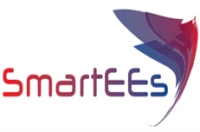 |
Sustainable ecosystem for the adoption, ramp-up and transfer of emerging electronics solutions |
|||
| Area | Smart Anything Everywhere Initiative (DT-ICT- 01-2019) | Starting date | 01/01/2020 | |
| Budget | € 8,46 M (EU contribution: € 7,99 M) | Duration | 36 months | |
Abstract:
Despite significant recent progress made by the EU industry, the level of digitalisation of industry remains uneven, depending on the sector, country and company size. Facing at the same time a scattered landscape of Research, Industry and Institutional stakeholders, the efficient adoption and transformation of enabling technologies into business visions & concrete market cases remain limited. This slow diffusion of digital technologies poses a risk to the EU’s ability to compete in the global economy. This is particularly true for Organic Large Area Electronics (OLAE) enabling technologies whose industry made significant progress recently and has established itself as a competitive growth industry. Despite proving that more and more products have matured onto the global market, the actual diffusion and efficient adoption of OLAE technologies remain limited. Underlying reasons and key challenges are identified (cost, processes, encapsulation, scalability, yield, standards & regulations), for which major breakthroughs are needed on use, production and cost rather than on basic technology, which reflects the growing market orientation of OLAE. To address both market & technology specific challenges, SmartEEs2 will be key role to link technology promises with real use/business cases. These cases will be implemented through a unique digitalisation experience providing experimentation, testing or support to manufacturing. SmartEEs2 will capitalize upon SmartEEs’ strong technological OLAE platform and focuss on the uptake of Flexible & Wearable Electronics enabling use cases, where OLAE can valorize its uniqueness (flexibility, conformability) and its promises for solutions in the fast growing business of wearables and Internet of Everything. SmartEEs2 will orchestrate a pan-EU collaboration network of Regional DIHs promoting the best quality level of digitalisation experience, hence boosting the efficiency and effectiveness of the overall OLAE European inDIH on Area3.
AMIRES role:
AMIRES was involved in the project’s preparatory phase and in the negotiations. Within the project the company is actively involved the preparation of a 1-stop shop / SmartEEs Ecosystem, and it will be responsible for Competitive selection of ICs and Joint planning, and business support to assigned Innovative Companies. In addition, AMIRES is responsible for project management and for dissemination of results.
Project partners: |
Contacts: |
|
Jérôme Gavillet
Project Coordinator Email: jerome.gavillet(at)cea.fr Jana Mwangi Project Manager Email: mwangij(at)amires.eu Website: www.smartees.eu |
 |
This project has received funding from the European Union’s Horizon 2020 research and innovation programme under grant agreement n°872076, project SmartEEs2. |
NanoQI
 |
Multimodal X-ray and Hyperspectral Thin-Film Nano-material Evaluation and Quality Imaging |
||||
| Area |
|
Starting date |
|
||
| Budget | € 4.99M (EU contribution: € 4.99M) | Duration | 36 months | ||
Abstract:
Functional performances of nano-materials and thin films with nano-scale thickness are determined not only by material selection but also by their nano-physical dimensions, nano-scale structure and their nano-scale chemical composition. Precise characterisation of these properties is critical to develop new functional nano-materials and optimise processes toward higher performance, improved reproducibility and yield and up-scaling to larger quantities.
X-ray characterisation techniques such as X-ray diffraction analysis (XRD) or X-ray reflectometry (XRR) are widely used in research laboratories for this task but are rarely used in industrial material development and assessment of production processes due to technical limitations and required high level expertise.
The project NanoQI targets the development of an industry-suited, real-time and in-line capable technique to characterise nano-structure and nano-dimensions of (thin-film) nano-materials by optimisation of area-detector based XRR and XRD concepts and their multi-modal combination with a novel wide-angle hyper-spectral imaging (HSI) technique. Therewith, NanoQI will provide industry access to real time evaluation of nano-material geometry, structure and morphology and correlative imaging of deviations of these properties.
NanoQI technology will be demonstrated in three relevant industrial application scenarios: in-situ process assessment in manufacturing of perovskite solar cells; large-area vacuum roll-to-roll coating of polymer webs and industrial atomic layer deposition of dielectric and gas barrier layers.
AMIRES role:
AMIRES was involved in the project’s preparatory phase and in the negotiations. Within the project AMIRES is responsible for the project management and leads the work package dedicated to dissemination, training and exploitation activities.
Project partners: |
Contacts: |
|
Dr. John Fahlteich
Project Coordinator Fraunhofer-FEP Email: john.fahlteich(at)fep.fraunhofer.de Martina Chopart Project Manager & Dissemination Manager AMIRES s.r.o. Email: chopart(at)amires.eu Website: www.nanoqi.eu |
 |
This project has received funding from the European Union’s Horizon 2020 research and innovation programme under grant agreement No 862055. |
Booster
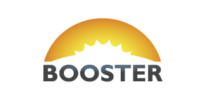 |
Boost Of Organic Solar Technology for European Radiance | |||
| Area | Photovoltaics | Starting date | 01/09/2020 | |
| Budget | € 8.2 M (EU contribution € 6.1 M) | Duration | 48 months | |
Abstract:
Building applied photovoltaic (BAPV) systems utilise solar panels retrofitted onto building structures such as rooftops or facades to generate electricity. The EU-funded BOOSTER project plans to use flexible organic photovoltaic (OPV) films, which are deemed suitable for BAPV applications. OPV modules feature a low energy payback time and use resources that are abundant, easily accessible and non-toxic. The project will bring OPV technology to TRL 7 by increasing module efficiency and lifetime while also optimising production costs. For successful proof of principle of the idea, researchers will demonstrate a “ready-to-stick” module and a textile-integrated product.
AMIRES role:
AMIRES was involved in the project’s preparatory phase and in the negotiations. AMIRES is responsible for the project management role and leads the work package dedicated to dissemination and exploitation activities.
Project partners: |
Contacts: |
|
Marion Indo Project Coordinator ARMOR SAS E-mail: marion.indo(at)armor-group.com Eleonora Alamaro Project Manager AMIRES, The business innovation management institute, z.u. E-mail: alamaro(at)amires.eu Website: https://www.booster-opv.eu./ |
 |
The BOOSTER project has received funding from the European Union’s Horizon 2020 research and innovation programme under grant agreement No 952911. |
Tinker
| Fabrication Of Sensor Packages Enabled by Additive Manufacturing | ||||
| Area | Assembly of micro parts (RIA) | Starting date | 01/10/2020 | |
| Budget | € 10.2 M (EU contribution € 10.2 M) | Duration | 36 months | |
Abstract:
The vision of TINKER is to provide a new cost- and resource efficient pathway for RADAR and LiDAR sensor package fabrication with high throughput up to 250units/min, improved automation by 20%, improved accuracy by 50% and reliability by a factor of 100 to the European automotive and microelectronic industry via additive manufacturing and inline feedback control mechanisms.
Autonomous driving and self-driving cars represent one prominent example for the use of microelectronics and sensor, most importantly RADAR and LiDAR sensors. Their respective markets have a big potential, e.g. it is estimated that the market size of LiDAR in automotive will double itself in the next two years (within 2020 to 2022). The public awareness and the industrial need for further miniaturization of such sensor packages is the main driver of ongoing efforts in the automotive sector to be able to integrate such devices into the car body like in the bumps and head lamps instead of attaching them (e.g. on top of the car in case of LiDAR device). Safety (for the driver and others) is the most important key aspect of the automotive sector. Therefore highly-value and high performance RADAR and LiDAR systems are required for advanced driver-assistance systems (ADAS) as well as robotic cars. Current bottlenecks are relevantly large size of such sensor devices, their weight and power consumption. Since these factors are highly limited within cars, further miniaturization and improving functionality and efficient use of resources is highly demanded.
AMIRES role:
AMIRES was involved in the project’s preparatory phase and in the negotiations. AMIRES leads the work package dedicated to dissemination and exploitation activities.
Project partners: |
Contacts: |
|
Leo Schranzhofer Project Coordinator PROFACTOR GmbH E-mail: leo.schranzhofer(at)profactor.at Martina Chopart Dissemination Manager AMIRES, s. r. o. E-mail: chopart(at)amires.eu Project website: www.project-tinker.eu |
 |
The TINKER project has received funding from the European Union’s Horizon 2020 research and innovation programme under grant agreement No 958472. |
Marvel
 |
Evolving reversible iMmunocapture by membrane sensing peptides: towARds scalable extracellular VEsicLes isolation | |||
| Area | Health and treatment | Starting date | 01/11/2020 | |
| Budget | € 1.88 M (EU contribution € 1.88 M) | Duration | 24 months | |
Abstract:
Extracellular vesicles (EV) are submicron membrane vesicles released by most cells with a fundamental role in cell-to-cell communication. Much interest is flourishing towards their exploitation in regenerative medicine and diagnostics. However, the fulfilment of the EV promise is hampered by severe limitations in their isolation, characterization and manufacturing. A particularly arduous task is to move the isolation of specific EV subpopulations beyond the analytical scale and towards scalable processes. In this scenario, our project will leverage on DNAdirected reversible immunocapturing (rDDI), a new technology developed within FET-OPEN project “INDEX”. rDDI relies on the reversible EV isolation mediated by immunoaffinity followed by intact vesicles recovery upon enzymatic cleavage of a DNA linker used to anchor antibodies on solid supports. Despite unprecedented efficiency in the recovery of highly pure EVs, limitations inherent to antibodies (high costs, batch-to-batch variation and limited versatility of chemical manipulation) substantially impair the scalability of rDDI for any operating scale exceeding the analytical one. MARVEL targets a paradigm shift from antibodies to peptides as an alternative class of affinity ligands for EV capturing by introducing membrane-sensing peptides (MSP) as novel ligands for the size-selective capturing of small EV, unbiased by differential surface protein expression. MARVEL mission is to combine and implement rDDI and MSP technologies, towards the first and best performing ever affinity-based technology for scalable and reversible small EV (<200nm) isolation. The modularity in scaling-up of the novel protocols and kits will be demonstrated on medium/large sample volumes in relevant environments for therapeutic and diagnostics use of EVs and specifically: 1) In the manufacturing of GMP-grade EVs as a medicinal product for cardiac repair; 2) In urine-based liquid biopsy for bladder cancer diagnostics.
AMIRES role:
Medicinal product for cardiac AMIRES was involved in the project’s preparatory phase and in the negotiations. AMIRES is responsible for the project management role and leads the work package dedicated to dissemination, communication, exploitation and tech transfer activities.
Project partners: |
Contacts: |
|
Marina Cretich Project Coordinator CNR-SCITEC: ISTITUTO DI SCIENZE E TECNOLOGIE CHIMICHE “GIULIO NATTA” OF THE CONSIGLIO NAZIONALE DELLE RICERCHE Email: marina.cretich(at)cnr.it Martina Nešverová Project manager AMIRES s.r.o. Email: nesverova(at)amires.eu Website: www.marvel-fet.eu |
 |
This project has received funding from the European Union’s Horizon 2020 research and innovation programme under grant agreement № 951768, project MARVEL. |
Condor
| COmbined suN-Driven Oxidation and CO2 Reduction for renewable energy storage | ||||
| Area | Energy | Starting date | 01/11/2020 | |
| Budget | € 3.98 M (EU contribution € 3.98 M) | Duration | 48 months | |
Abstract:
Conversion of sunlight into fuels and mitigation of anthropogenic climate change are big scientific challenges. CONDOR addresses both of them by developing highly efficient solar-driven conversion of CO2 into fuels and added-value chemicals. We propose a photosynthetic device made of two compartments (a) a photoelectrochemical cell that splits water and CO2 and generates oxygen and syngas, a mixture of H2 and CO; (b) a (photo)reactor that converts syngas into methanol and dimethylether (DME), via bi-functional heterogeneous catalysts. The proposed modular approach enables different configurations depending on the target product. The oxidation process is not limited to O2 production, but entails chlorine and small organic molecules, such as 2,5-furandicarboxylic acid, derived from the oxidation of low-cost and easily available precursors like salt water or alcohol derived biomass, respectively. Employed materials will be obtained through low energy/low temperature routes, mainly based on wet chemical procedures, such as sol-gel chemistry, mild hydrothermal processes, electrochemical processes at ambient temperature. Raw materials/precursors will not be limited by availability on a global scale, making use of organic species, silicon, earth abundant metal oxides, first row transition metals. The final target is a full photosynthetic device with 8% solar-to-syngas and 6% solar-to-DME efficiencies with three-months continuous outdoor operation.
This represents a large progress with respect to the state of the art and requires an international collaboration and a multidisciplinary approach, which integrates expertise in nanomaterials preparation and characterisation by operando microscopy and spectroscopy, homogeneous and heterogeneous catalysis, photochemistry/photoelectrochemistry, PEC engineering and assessment of the environmental and socio-economic impact of the proposed technology, including life cycle assessment.
AMIRES role:
AMIRES was involved in the project’s preparatory phase and in the negotiations. Within the project, AMIRES is responsible for the project management and leads the work package dedicated to the communication and dissemination of results and exploitation activities.
Project partners: |
Contacts: |
International partner (outside of the consortium): THE UNIVERSITY OF NORTH CAROLINA AT CHAPEL HILL – USA |
Prof. Paola Ceroni Project Coordinator Universita Di Bologna Email: paola.ceroni(at)unibo.it Anastasia Grozdanova Project Manager AMIRES s.r.o. Email: grozdanova(at)amires.eu Website: www.condor-h2020.eu/ |
 |
This project has received funding from the European Union’s Horizon 2020 research and innovation programme under grant agreement No 101006839, project CONDOR. |
Pancaim
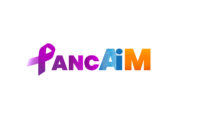 |
Pancreatic cancer AI for genomics and personalized Medicine | |||
| Area | Health and treatment | Starting date | 01/01/2021 | |
| Budget | €8,24 M (EU contribution €8,24 M) | Duration | 48 months | |
Abstract:
The central PANCAIM concept is to successfully exploit available genomic and clinical data to improve personalized medicine of pancreatic cancer. PANCAIM’s concept is unique as it integrates the whole spectrum of genomics with radiomics and pathomics, the three future pillars of personalized medicine. The integration of these three modalities is very challenging in the clinic, but also with AI. PANCAIM uses an explainable, data-efficient, twostaged AI approach. AI biomarkers transform the unimodal data domains into interpretable likelihoods of intermediate disease features. A second AI layer merges the biomarkers and responds with an integrated assessment of prognosis, prediction and monitoring of therapy response, to assist in clinical decision making.
PANCAIM builds on four key concepts of AI in Healthcare: data providers, clinical expertise, AI developers, and MedTech companies to connect to data and bring AI to healthcare. Data quantity and quality is the main factor for successful AI. Partners provide eleven Pan European repositories of almost 6000 patients that are open to ongoing accrual. SME Collective Minds builds the GDPR data platform that hosts the data and provides a trustable connection to healthcare for even more and sustainable data. SME The Hyve builds tooling to connect to more genomic repositories (EOSC Health). Six Pan European academic centers provide clinical expertise across all modalities and
help realize a curated, high quality annotated data set. Partners also include expert AI healthcare researchers across all clinical modalities with a proven track record. Finally, Siemens Healthineers provides their AI expertise and tooling to bring AI into healthcare for clinical validation and swift clinical integration in 3000 health care institutes.
AMIRES role:
AMIRES was involved in the project’s preparatory phase and in the negotiations. Within the project it is responsible for administrative project management and for dissemination of results.
Project partners: |
Contacts: |
|
Henkjan Huisman Project Coordinator STICHTING KATHOLIEKE UNIVERSITEIT Email: Henkjan.Huisman(at)radboudumc.nl Kristin Aldag Project manager AMIRES s.r.o. Email: aldag(at)amires.eu Website: www.pancaim.eu |
 |
This project has received funding from the European Union’s Horizon 2020 research and innovation programme under grant agreement № 101016851, project PANCAIM. |
Inspire
 |
InP on SiN Photonic Integrated circuits REalized through wafer-scale micro-transfer printing |
|||
| Area | Technologies for Digitising European Industry | Starting date | 01/01/2021 | |
| Budget | €4,98 M (EU contribution €4,98 M) | Duration | 42 months | |
Abstract:
INSPIRE aims to revolutionize photonic integrated circuit technology by combining two technologies, InP photonics and SiN photonics, in a single platform through wafer-scale micro-transfer printing technology. This platform will allow to combine high-performance III-V opto-electronic components (semiconductor optical amplifiers, high-speed phase modulators and photodetectors) operating in the C-band with the high-performance passive functionality of the SiN platform (high performance filters, 5dB/m waveguide loss), on 200mm wafers. The micro-transfer printing integration approach enables high-throughput integration of III-V devices on SiN photonic integrated circuits with better than 1 um alignment accuracy, resulting in high-performance, low-cost photonic integrated circuits. While being applicable in a wide range of mega-markets, the INSPIRE technology will be validated by three use cases: the case of a distributed fiber sensing readout unit based, the case of a microwave photonics RF pulse generator and a datacenter switch fabric. Compact models of the III-V opto-electronic components will be developed enabling designers to exploit this platform for a wide range of applications. INSPIRE will sustain Europe’s industrial leadership in photonics by combining the generic integrated foundry technology at the pioneering pure-play foundry SmartPhotonics, and the silicon photonics pioneer IMEC, with the micro-transfer printing technology at X-Celeprint, making this a worldfirst platform combining the strengths of all known PIC manufacturing platforms. It will also strengthen the European manufacturing base by developing and implementing processing steps that are key to removing expensive assembly steps in photonic IC based product realization. The methods will be developed for silicon nitride – indium phosphide integration. Since the optical coupling happens through a silicon intermediate layer the developed technology can be ported to silicon photonics as well.
AMIRES role:
Within the project AMIRES is actively involved in the administrative and financial project management. AMIRES is also responsible for dissemination activities.
Project partners: |
Contacts: |
|
Martijn Heck Project Coordinator TECHNISCHE UNIVERSITEIT EINDHOVEN Email: m.heck(at)tue.nl Jana Mwangi Project manager AMIRES s.r.o. Email: mwangij(at)amires.eu Website: www.inspire-h2020.eu |
 |
This project has received funding from the European Union’s Horizon 2020 research and innovation programme under grant agreement № 101017088, project INSPIRE. |
PhotonHub
 |
One-Stop-Shop Open Access to Photonics Innovation Support for a Digital Europe |
|||
| Area | Photonics Innovation Hubs | Starting date | 01/01/2021 | |
| Budget | €19,56 M (EU contribution €18,99 M) | Duration | 52 months | |
Abstract:
PhotonHub Europe will establish a single pan-EU Photonics Innovation Hub which integrates the best-in-class photonics technologies, facilities, expertise and experience of 53 partners from all over Europe, including the coordinators of EU pilot lines and local photonics hubs representing 18 regions, as a one-stop-shop solution offering a comprehensive range of supports to industry for the accelerated uptake and deployment of photonics. PhotonHub will provide European companies, in particular “non-photonics” SMEs and mid-caps that are first users and early adopters of photonics, with open access and guided orienteering to the following key support services: training and upskilling opportunities within PhotonHub’s Demo and Experience Centres throughout Europe and enhanced by digital tools for online learning; “test before invest” innovation support capabilities to engage with companies on highly collaborative Innovation Projects aimed at TRL acceleration from prototyping (TRL3-4) to upscaling (TRL5-6) to manufacturing (TRL7-8), and complemented by targeted business and IP advisory supports; and support to find investment through investment-readiness coaching and investor match-making organised in collaboration with major regional and European venture fora and deep tech Investor Days. PhotonHub will uniquely support cross-border innovation activities of European companies, while simultaneously working closely with the local photonics hubs to develop and roll out best practices of the “lighthouse” regions for ongoing regional financial support of SME innovation activities and to support the creation of new innovation hubs covering most regions of Europe. Finally, PhotonHub will fine-tune and implement its business plan for long-term sustainability in the form of the PhotonHub Europe Association as a durable entity which is deeply rooted within the wider ecosystem of local, regional and EUDIHs for maximum leverage and impact on European competitiveness and sovereignty.
AMIRES role:
AMIRES will assist the project in building strong industry awareness of the photonics innovation hub through communications tools such as creating the public website and interactive community-building platform. Amires will also assist in the creation of the online catalogue of training offerings in photonics and fine-tune the business plan for long-term sustainability of the Photonics Innovation Hub.
Project partners: |
Contacts: |
|
Prof. Hugo Thienpont Project Coordinator VRIJE UNIVERSITEIT BRUSSEL Email: hugo.thienpont(at)vub.be Nathalie Debaes Project Co-coordinator VRIJE UNIVERSITEIT BRUSSEL Email: ndebaes(at)b-phot.org Website: www.photonhub.eu |
 |
This project has received funding from the European Union’s Horizon 2020 research and innovation programme under grant agreement № 101016665, project PhotonHub Europe. |
Tumor-LN-oC
 |
Tumor and Lymph Node on Chip for cancer studies |
|||
| Area | Next generation organ-on-chip (RIA-LS) | Starting date | 01/05/2021 | |
| Budget | €5,77 M (EU contribution €5,77 M) | Duration | 48 months | |
Abstract:
The lymphatic system and lymph nodes (LNs) are an integral part of our adaptive immune system and many tumors exploit lymphatic vessels to spread and colonize downstream LNs. Tumor-LN-oC aims to offer a comprehensive solution for a robust, automated tumor-lymph node-on-chip platform that will connect primary surgically removed human tumors and LN tissue from the same cancer patient. This will allow us to study the interaction of primary tumors with lymph nodes, identify their chemical signature, and offer personalized treatment relying on molecular characterization of lymph node metastasizing cells. The project will significantly advance the fields of microfluidics, cell biology, cancer biology, physics, and computer programming and software development, by pursuing the following objectives: a) To introduce novel designs and develop robust, automated microfluidic chips optimized for tumor cell and LN culture enabling the study of their crosstalk, b) To integrate Quantum Cascade Laser based mid- IR spectroscopy for specific chemical signatures, c) To molecularly characterize both migrating tumor-derived cells attracted to the LN and the soluble signals driving migration, d) To demonstrate an advanced image analysis and signal processing platform using deep learning algorithms facilitated by a micro-optics module to monitor in real time the cells migration, e) To integrate all Tumor-LN-oC technologies in an automated platform prototype incorporating interfaces compatible with existing laboratory equipment. The Tumor-LN-oC platform, will be developed at TRL5 and will be validated using real patient samples. Regulatory pathways, standards and requirements compliance will be considered in order to facilitate exploitation and early market entry. The consortium encompasses key – industrial partners and experts in the aforementioned interdisciplinary fields and is expected to have substantial impact in EU’s economy and healthcare.
AMIRES role:
Within the project AMIRES is responsible for administrative project management and for dissemination of results.
Project partners: |
Contacts: |
|
Prof. Ioanna Zergioti Project Coordinator Institute of Communication and Computer Systems Email: zergioti(at)central.ntua.gr Kristin Aldag Project manager AMIRES s.r.o. Email: aldag(at)amires.eu Website: www.tumor-ln-oc.eu/ |
 |
This project has received funding from the European Union’s Horizon 2020 research and innovation programme under grant agreement No 953234, project Tumor-LN-oC. |
ComBioTES
|
Compact bio-based thermal energy storage for buildings |
||||
| Area | Thermal Energy Storage | Starting date | 01/06/2021 | |
| Budget | €4,19 M (EU contribution €3,99 M) | Duration | 66 months | |
Abstract:
Thermal end-uses (space heating, hot tap water, cooling) represent a major part of electricity consumption in Europe and cause consumption peaks, often when electricity is expensive. Hot tap water is the only thermal end-use provided as a base load over a year and that is stored. Space heating and air conditioning are thermal end-uses with a high residential electricity consumption. They are not stored at the buildings scale to allow peak shaving of the residential electricity consumption. These statements show the interest to develop appropriate thermal energy storages, suitable for buildings, to reduce the electricity bill of end users. ComBioTES will thus develop a modular compact thermal energy storage (TES) solution for heating, hot tap water and cooling fully adapted for electricity load shifting.
A first modular TES will be able to store hot tap water to be converted into ice storage during summer (cooling needs). A second compact latent TES, using high performances (ΔH≈260kJ/kg) bio-based non-aggressive PCM, will store high heating energy amount, for space heating or hot tap water demands. As thermal end-uses in buildings are different regarding seasonal needs, this concept combines the advantage of a modular TES (high utilization rate) with the high volumetric energy density of a latent TES using a bio-based PCM (high compactness: ≥ 100kWh/m3 ΔT=50°C). The ComBioTES consortium and associated External Advisory Board (Idex, Danfoss and Passive House) involve all relevant key players in energy storage and management: RTOs for development and testing infrastructure and SMEs for manufacturing & commercialization of the technology, and representative of potential customers and end users (building owners &operators). In line with IC7, two partners from CHINA (The Institute of Electrical Engineering of the Chinese Academy of Sciences, and The Henan Province Guoan Heating Equipment Co., LTD) will promote the ComBioTES concept in this country.
AMIRES role:
Within the project AMIRES is responsible for administrative project management and for dissemination of results.
Project partners: |
Contacts: |
|
Arnaud Bruch Project Coordinator Commissariat à l’énergie atomique et aux énergies alternatives Email: arnaud.bruch(at)cea Eleonora Alamaro Project manager AMIRES s.r.o. Email: alamaro(at)amires.eu Website: www.combiotes.eu/ |
 |
This project has received funding from the European Union’s Horizon 2020 research and innovation programme under grant agreement No 864496, project ComBioTES. |
eCap
 |
eHealth CAPsule for digestive disease diagnostics and therapy |
|||
| Area | Smart medical devices | Starting date | 01/05/2022 | |
| Budget |
€ 5,56 M (EU contribution: € 4,75 M) |
Duration | 48 months | |
Abstract:
eCAP aims to deliver a novel medical device, which combines a smart capsule with an e-health platform for better diagnostics, patient empowered disease management and hence, improved outcomes for patients with gastrointestinal (GI) diseases. Our project will create a modular and implantable capsule with multi-sensing capacity that enables GI physiology monitoring for a controlled time period, leveraging the minimally invasive surgical approach of flexible endoscopy. eCAP will use a worldwide ubiquitous smartphone communication standard, together with cloud computing technology and application interfaces to integrate, process and interpret longitudinal physiological data collected by the capsule. The digital platform is designed to improve the accuracy and clinical usefulness of standard test data by incorporating patient reported outcome measures. The clinician is able to personalize the test for the patient and receive accurate and meaningful results from this multi-stream data input with interpretation aided by Artificial Intelligence. The universality of the eCAP solution will allow dissemination of advanced GI disease diagnostics to patients and doctors worldwide, including low resource environments. During the project, we will demonstrate eCAP’s clinical value and cost savings using gastroesophageal reflux disease (GERD), a worldwide, common, and extremely costly problem, as a clinical target. Clinical evaluation with health-economics analysis will be conducted in France, Ukraine and Kenya, and a specific education program will be developed to train practitioners to use the novel technology. eCAP builds on several years of R&D by our consortium in the field of implantable capsules for GI disease diagnostics. Its ambition is to facilitate a shift in GI diagnostics from its current unscalable analogue version to a patient centred e-health tool and to make Europe the leader in the rapidly growing field of connected medical devices for remote patient monitoring.
AMIRES role:
AMIRES was involved in the project’s preparatory phase and in the negotiations. Within the project it is responsible for administrative project management and for dissemination of results.
Project partners: |
Contacts: |
|
Lee Swanström Project Coordinator Email: lee.swanstrom(at)ihu-strasbourg.eu Kristin Saar Project Manager Email: saar(at)amires.eu Website: www.ehealth-cap.eu/ |
 |
Co-funded by the European Union. This project has received funding from the European Union’s Horizon 2020 research and innovation programme under grant agreement No 101057525. |
InVECOF
 |
Innovative Value Chains for European Ceramic Oxide Fibres |
|||
| Area | Innovative value chains for sustainable products from raw materials | Starting date | 01/05/2022 | |
| Budget |
Total cost: 8,609,238.75 €; EU Contribution: 7,110,470.25 € |
Duration | 36 months | |
Abstract:
Oxide fibre reinforced ceramics, so-called oxide ceramic matrix composites (O-CMC) have to be considered as strategic materials from now to the future, e.g. for use in next generation aero-engines, stationary gas turbines, power-to-X processes with concentrated solar power CSP, chemical industry, batch carrier for high temperature processes, etc. Today such high-end O-CMC components and the key raw material, the ceramic fibres as reinforcement component, are mainly exclusively produced in the United States. But as these are key components for the European manufacturing, energy and aerospace industry, there is a need to develop a European oxide fibre and O-CMC component industry, decreasing dependence on non-EU producers.
The InVECOF project addresses this need and provides a substantial contribution to sustainable product innovation action through the two following key activities:
- to develop a European oxide ceramic reinforcing fibre equivalent to US fibres and to establish it among end users (ROF fibre) and
- to develop and validate a next-generation fibre in parallel with improved thermos-mechanical properties (NGO fibre).
The ROF fibre will present an equivalent to the dominant 3M Nextel fibres with better availability, without dual-use restrictions from the US and possibly lower price is needed and the NGO fibre will have improved thermo-mechanical properties compared to the benchmark fibres in order to make processes, plants, turbines, etc. more energy efficient through higher application temperatures.
The project InVECOF Innovative Value Chains for European Ceramic Oxide Fibres covers the whole process chain beginning from fibre development and production over weaving these fibres to fabrics to O-CMC manufacturing, coupons and demonstrators for every end-user application, up to testing Ox-fibers and O-CMC components in relevant environments with project partners for every step from three countries in Europe.
AMIRES role:
Within the project AMIRES was involved in the project’s preparatory phase and negotiations and is responsible for administrative project management and for communication and dissemination.
Project partners: |
Contacts: |
|
Arne RÜDINGER Project Coordinator Fraunhofer Email: arne.ruedinger(at)isc.fraunhofer.de Václav SMÍTKA Project manager AMIRES, The Business Innovation Management Institute z.u. Email: smitka(at)amires.eu Website: www.invecof.eu |
 |
Co-funded by the European Union. This project has received funding from the European Union’s Horizon 2020 research and innovation programme under grant agreement No 101058078. |
ECOTRON
|
How to minimize the ecological footprint for functional electronics? |
||||
| Area | Functional electronics for green and circular economy | Starting date | 01/09/2022 | |
| Budget |
Total cost: 4 999 000.25€; EU Contribution:4 999 000.25€ |
Duration | 48 months | |
Abstract:
A growing desire for continuous data collection, real time information and connectivity has resulted in increased demand for electronic functionalities that are fully integrated in everyday objects. Consumer electronics, healthcare, wearable electronics, IoT and smart packaging are examples of market segments that follow this trend. Printed circuit boards (PCBs) are the state-of-the-art technologies used to create electronic functions. However, this technology creates an ever increasing strain on the environment because recycling and/or dismantling of the PCB can hardly be done. A radical sustainability improvement requires disruptive electronics manufacturing processes, technologies and materials. Printed electronics are more environmentally friendly than the traditional PCB, due to their additive character (printing instead of etching), the absence of chemical etching materials, low energy demanding process conditions and possibility for recovery or re-use of substrates and (metallic) inks. Thereto, in ECOTRON, flexible, organic & printed electronics are advanced through a multidisciplinary approach involving biobased materials, innovative (print) processes, and device and module dismantling technologies. Furthermore, recycling technologies and standards will be developed that are eventually integrated in a process design for a printed electronics recycling plant. Simultaneously, the lifetime of printed electronics is improved for larger implementation of printed electronics into everyday products. ECOTRON will create use-case demonstrators in existing state-of-the-art electronics products in consumer electronics, smart packaging, healthcare and wearable electronics market segments to demonstrate the potential environmental enhancements.
AMIRES role:
AMIRES was involved in the project’s preparatory phase and negotiations. AMIRES is assisting the coordinator with project management and is responsible for communication and dissemination.
Project partners: |
Contacts: |
|
Corne RENTROP Project Coordinator TNO – Holst Centre Email: corne.rentrop(at)tno.nl Lenka BAJAROVÁ Project Manager AMIRES s.r.o. Email: bajarova(at)amires.eu Website: www.ecotron-project.eu |
 |
Co-funded by the European Union. This project has received funding from the European Union’s Horizon 2020 research and innovation programme under grant agreement No 101070167. |
SuPerTandem
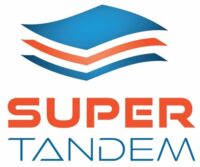 |
Sustainable materials and manufacturing processes for the development of high efficiency, flexible, all-Perovskite Tandem photovoltaic modules with low CO2 footprint |
|||
| Area | Novel tandem, high efficiency Photovoltaic technologies targeting low cost production with earth abundant materials | Starting date | 01/10/2022 | |
| Budget |
Estimated Project Cost: 4 930 196, 25 €; EU Contribution: 4 930 196, 25 € |
Duration | 36 months | |
Abstract:
The SuPerTandem project aims to accelerate Europe’s transition to clean energy by developing innovative photovoltaic (PV) manufacturing technologies for 2-terminal tandem cells and monolithically connected modules on flexible foils using low cost solution-processed perovskite absorber layers. Such devices feature efficiencies above 30%, performance stability profiles comparable to c-Si technologies, and excellent sustainability profile. Important aspects are minimizing the use and impact of scarce and critical materials by employing sustainable, earth-abundant materials and applying encapsulation as well as recycling strategies to guarantee circularity. Application of scalable manufacturing processes on film substrates will enable low production cost (< 20 €/m2) and lower cost of electricity compared to current Si PV technology. This will be achieved by the partnership of leading European labs, industrial equipment makers and flexible PV module producing companies, building a coherent value chain of European innovation driven, cost competitive manufacturing to provide affordable innovative PV solutions. Dual use of land/surfaces will capitalize the application advantages of developed lightweight flexible free-form factor PV modules for integration into buildings, vehicles and agrivoltaics to facilitate net zero emission targets with affordable integrated systems. The overarching aim of SuPerTandem is to demonstrate technologies at TRL 5, while participating partners have interests to quickly implement the project outcomes for establishing roll-to-roll manufacturing plants in EU. The sustainability of the developed module technology will be validated from environmental and economic points of view by life-cycle and techno-economic assessments, highlighting its potential for low resource consumption and CO2 footprint and thus for salient contributions to a sustainable, secure, safe and affordable supply of renewable energy in Europe.
AMIRES role:
AMIRES was involved in the project’s preparatory phase and in the negotiations. AMIRES steps in the project as a project and dissemination manager.
Project partners: |
Contacts: |
|
Sjoerd Veenstra Project Coordinator TNO Email: sjoerd.veenstra(at)tno.nl Václav Smítka Ph.D. Project manager AMIRES, s.r.o. Email: smitka(at)amires.eu Website: www.SuPerTandem.eu |
 |
This project has received funding from the European Union’s Horizon Europe research and innovation programme under grant agreement No 101075605, project SuPerTandem. |
Convert2Green
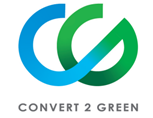 |
Converting Facilities Network for accelerating uptake of climate neutral materials in innovative products |
|||
| Area | Climate Neutral and Circular Innovative Materials Technologies Open Innovation Test Beds | Starting date | 01/01/2023 | |
| Budget |
Total cost: 12 470 685 €; EU Contribution: 11 383 136, 63 € |
Duration | 36 months | |
Abstract:
Convert2Green will establish an Open Innovation Test Beds (OITB) that enables material suppliers to integrate their innovative, circular and carbon neutral material solutions to the European Key Value Chains: Clean Autonomous Vehicles; Smart Health; Industrial IoT; Low Carbon Industry and Clean Energy. Thus, Convert2Green will provide innovative material suppliers new business opportunities in these value chains. Convert2Green will complement the European Open Innovation Ecosystem with services not present in other OITBs by now:
(1) Complete Eco-Impact Analysis from Raw Material to Product as a service including LCA, LCC, Safety and Toxicity;
(2) TRL4 to 7 Process Chains for Smart Textiles and Processing of Fiber based materials;
(3) TRL4 to 7 Process Chain for Electronics on Plastic, Paper and Textiles;
(4) Pilot Facilities for recovering critical raw materials from products;
(5) Pilot Facilities for Processing of recycled plastics and composites,
(6) Pilot facilities manufacturing of (nano)fibers and composites from bio-sources.
Furthermore, Convert2Green will be the first OITB that establishes and provides to the OITB ecosystem:
(1) procedures and contract models for licensing of joint IP through the Single Entry Point(s);
(2) multilingual digital platform to integrate and jointly promote the service portfolio of all OITBs as well as to interconnect relevant stakeholders and to allow fully digital project and knowledge management;
(3) novel financing models for SME combining a trust generating due-diligence structure with project based investment models and crowd-invest opportunities to accelerate market entry in all value chains given above.
Convert2Green will integrate its services with the whole European Innovation Ecosystem and continues the series of OITB events started by Safe-n-MedTech and FlexFunction2Sustain OITBs to unite and jointly promote the (currently 25) OITBs as a whole to European SME, Industry, Policy Makersand other relevant stakeholders.
AMIRES role:
AMIRES was involved in the project’s preparatory phase and in the negotiations. AMIRES steps in the project as a project and dissemination manager, OITB helpdesk and open calls administrator.
Project partners: |
Contacts: |
|
Magdalina KROKIDA Project Coordinator NTUA Email: mkrok(at)chemeng.ntua.gr Martina CHOPART Project manager AMIRES, The Business Innovation Management Institute z.u. Email: chopart(at)amires.eu Website: |
 |
This project has received funding from the European Union’s Horizon Europe research and innovation programme under grant agreement No 101092347, project Convert2Green. |
MATEL
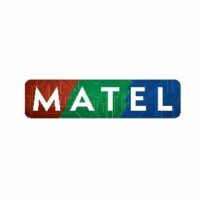 |
PZT and Graphene MATerials innovations for advanced opto-Electronic applications in AR and biosensing |
|||
| Area | Optoelectronics and advanced materials | Starting date | 01/01/2023 | |
| Budget |
Total cost: €3.2M €; EU Contribution: €3.2M € |
Duration | 42 months | |
Abstract:
Europe’s leading position in photonics and electronics can only be secured by adapting to the next generation of optoelectronic device requirements: high performance, multi-functionality and cost efficiency in miniaturized footprint. These can only be achieved if novel schemes for on-chip integration emerge. Among the established platforms for optoelectronic integrated circuits (OEICs), silicon nitride as a wide-band and low-loss material stands outs. However, Si3N4 itself has no active effect and the heterogeneous integration of active III-V and II-VI semiconductor chips is currently very complicated and costly. MatEl offers a unique solution to this challenge and promises to enable a novel on-chip integration scheme: Laser Digital Processing – Laser Transfer and Laser Soldering – will be employed for the accurate and fast alignment and bonding of any type of chip package (OEIC) on Si3N4. The hybrid platform will be enhanced by the monolithic integration of advanced materials (graphene and high-quality PZT), which will enable multiple functionalities in miniaturized footprint. MatEl will thus demonstrate two next-gen optoelectronic devices at TRL5:
1) 2D light source for AR displays with integrated RGB lasers and OEIC-based demultiplexers.
2) Bio-photonic sensor for antibodies detection with on-chip VCSEL at 850 nm featuring graphene photodetectors.
Overall, MatEl ’s hybrid platform will combine the wide bandwidth and high confinement provided by Si3N4 with the active functionality of III-V and II-VI lasers, supporting a broad spectrum of next-gen applications, extending far beyond these demo applications. Hence, MatEl will reinforce the existing collaborations within the consortium and introduce new eco-systems, estimated to strengthen the EU photonics and microelectronics industrial capability by generating multi M€ turnovers to the involved SMEs and more than 200 new employment positions by the end of its timeframe.
AMIRES role:
AMIRES was involved in the project’s preparatory phase and in the negotiations. Within the project, AMIRES is responsible for the project management and leads the work package dedicated to dissemination, training and exploitation activities.
Project partners: |
Contacts: |
|
Prof. Ioanna ZERGIOTI Project Coordinator NTUA Email: zergioti(at)central.ntua.gr Marco Messina Project manager AMIRES s.r.o. Email: messina(at)amires.eu Website: www.project-matel.eu |
 |
This project has received funding from the European Union’s Horizon Europe research and innovation programme under grant agreement No 101091774. |
MADE-3D
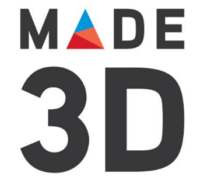 |
Multi – Material design using 3D printing |
|||
| Area | Materials Engineering – HORIZON Research and Innovation Actions | Starting date | 01/01/2023 | |
| Budget |
Total cost: 5 483 257.50 € |
Duration | 42 months | |
Abstract:
Additive manufacturing (AM) has the economic potential to complement conventional manufacturing processes, especially in the production of complex, multi-material (MM) components. To exploit the full benefits of optimized lightweight structures, it is usually required to use multi-materials with different physical properties.
Still, multi-material combinations from conventional processes are not transferable to AM, due to residual stresses, cracks, or thermal expansion rates of the different materials. Furthermore, geometric shape and position tolerances, as well as recycling strategies for powder waste, post-processed waste, and the component itself are not yet defined.
Based on the 3D printing processes PBF-LB and DED, this project aims at the concurrent engineering of designing processable multi-material optimized alloys, development of design concepts for multi-material structures with specific simulations for load cases and topology optimizations, and an extensive process adaption. Alloy and process development will be aided by advanced integrated computational material engineering approaches that combine thermodynamics, microstructure, and process simulations through machine-/active learning, resulting in shorter material development cycles. For bulk and powder materials, recycling of multi-material components via innovative concepts will promote the sustainability of multi-material additive manufacturing. This adaption will lead to increased process reliability and speed, enabling the dissemination of MM manufacturing in AM for the entire industry.
The consortium brings a wide range of international expertise to the table, from materials research and digitization to the manufacture of multi-material components. It consists of startups, research institutions and market leaders in additive manufacturing. Industrial end-users cover automotive, aerospace and aeronautic applications with specific use cases.
AMIRES role:
Within the project AMIRES was involved in the project’s preparatory phase and negotiations and is responsible for administrative project management and for communication and dissemination.
Project partners: |
Contacts: |
|
Prof. Dr. Dennis LEHNERT Project Coordinator UPB Email: dennis.lehnert(at)uni-paderborn.de Marina SOUZA FARIA Project manager AMIRES, s.r.o. Email: souzafaria(at)amires.eu Website: www.made-3d.eu |
 |
This project has received funding from the European Union’s Horizon Europe research and innovation programme under grant agreement No 101091911. |
QU-PILOT
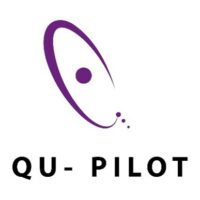 |
Supporting experimental production capabilities for quantum technologies in Europe |
|||
| Area | Quantum Technology | Starting date | 01/04/2023 | |
| Budget |
Total cost: €19M EU Contribution |
Duration | 42 months | |
Abstract:
The Qu-Pilot SGA proposal consists of 21 partners from 9 different countries aiming to develop and provide access to the first, federated European fabrication (production) capabilities for quantum technologies, building on and linking together existing infrastructures in Europe. Qu-Pilot will implement the first stage of the capability innovation roadmap for providing experimental (pilot) production capabilities and a roadmap for transferring such capabilities to an industrial production environment, as was proposed in the awarded FPA. It will provide experimental production capabilities for quantum technologies in computing, communication and /or sensing through 13 service-provider organizations available to users, including industry, in particular SMEs and contribute to developing European standards in the field. Qu-Pilot will provide services for the development of a European supply chain of quantum technologies, provide European industry, especially start-ups and SMEs, with the necessary innovation capacity, and make sure that critical IP remains within the EU. The initial service offering will be validated through use-cases with companies within the SGA. A minimum of 20 such use-cases are expected and of those 11 are already part of this Qu-Pilot SGA proposal. The competence development, industrial use-cases and ecosystem building – all the activities identified and set out in the FPA will have first set of implementation through this first SGA.
AMIRES role:
AMIRES was involved in the project’s preparatory phase and in the negotiations. AMIRES is leading WP9- Dissemination, communication & exploitation. Supporting coordinator in WP10 Project Management. Highly involved in WP7 Qu-Pilot operation, sales and customer relations, responsible for task 7.3 Ecosystem Management Platform and task 7.4 Business development, IP consulting and Investor Relations. In WP8 Business model validation via Open Calls is talking a lead of task 8.1 Application rules, open calls.
Project partners: |
Contacts: |
|
Mika Prunnila Project Coordinator VTT Email: mika.prunnila(at)vtt.fi Jana Mwangi Project manager AMIRES, The Business Innovation Management Institute z.ú. Email: mwangij(at)amires.eu Website: coming soon |
 |
This project has received funding from the European Union’s Horizon Europe research and innovation programme under grant agreement No 101113983. |
QU-TEST
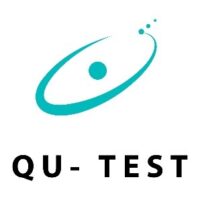 |
Supporting open testing and experimentation for quantum technologies in Europe |
|||
| Area | Quantum technology | Starting date | 01/04/2023 | |
| Budget |
Total cost: €18,934,689.50 EU Contribution: |
Duration | 42 months | |
Abstract:
Qu-Test brings together 13 service providers for a federated network of testbeds and 11 industrial users from the European quantum community. The network brings together competences and infrastructures across Europe to offer testing and validation services. A first goal of this cooperation is to support the creation of a trusted supply chain through the validation of quantum devices, chips, components, and systems by the testbed network as an independent third party.
A second goal is to discuss and agree on unified sets of parameters to characterize quantum devices. Methodologies and procedures will be harmonized among the partners of the testbed network in a step towards establishing standards for quantum technologies. Qu-Test is aligned along three testbeds: quantum computing, quantum communication, quantum sensing. In more detail, the Quantum Computing Testbed will measure, characterise, and validate cryogenic quantum devices, cryogenic qubits such as superconducting and semiconducting qubits, photonics qubits and ion traps. The Quantum Communication Testbed will characterize devices for Quantum Key Distribution (QKD) and Quantum Random Number Generation (QRNG) and provide design and prototyping services to support innovation in the supply chain of quantum communication technologies.
Finally, the Quantum Sensing Testbed will benchmark sensing and metrology instruments provided by industry and use a large suite of quantum sensors (clocks, gravimeters, magnetometers, imagers) to validate industrial use cases aiming at generating new business cases for quantum sensing and metrology devices. With additional services of IPR support, business coaching and innovation management, Qu-Test supports the European quantum industry with a holistic one-stop-shop to move the full ecosystem forward.
AMIRES role:
AMIRES was involved in the project’s preparatory phase and in the negotiations. AMIRES is leading WP8 Dissemination, communication & exploitation. Supporting coordinator in WP9 Project Management. Highly involved in WP6 Qu-Test operation, sales and customer relations, responsible for task 6.3 Ecosystem Management Platform and task 6.4 Business development, IP consulting and Investor Relations. In WP7 Business model validation via Open Calls is talking a lead of task 7.1 Application rules, open calls.
Project partners: |
Contacts: |
|
1. NEDERLANDSE ORGANISATIE VOOR TOEGEPAST NATUURWETENSCHAPPELIJK ONDERZOEK TNO, The Netherland 2. TEKNOLOGIAN TUTKIMUSKESKUS VTT OY, Finland 3. INTERUNIVERSITAIR MICRO-ELECTRONICA CENTRUM / IMEC, Belgium 4. FRAUNHOFER GESELLSCHAFT ZUR FORDERUNG DER ANGEWANDTEN FORSCHUNG e.V, Germany 5. AIT AUSTRIAN INSTITUTE OF TECHNOLOGY GMBH, Austria. 6. COMMISSARIAT A L ENERGIE ATOMIQUE ET AUX ENERGIES ALTERNATIVES, France 7. PHYSIKALISCH-TECHNISCHE BUNDESANSTALT, Germany 8. INSTITUTO NAZIONALE DI RICERCA METROLOGICA, Italy 9. LABORATOIRE NATIONAL DE METROLOGIE ET D´DESSAIS, France 10. OBSERVATOIRE DE PARIS, France 11. INSTITUT D´OPTIQUE THEORIQUE ET APPLIQUEE LOTA- SUPOPTIQUE, France 12. AMIRES THE BUSINESS INNOVATION MANAGEMENT INSTITUTE Z.Ú., Czech Republic 13. SONNENBERG HARRISON PARTNERSCHAFT MBB PATENT UND RECHTSANWALTSKANZLEI, Germany 14. INFINEON TECHNOLOGIES AUSTRIA AG, Austria 15. QUANTWARE B.V. The Netherlands 16. SILENT WAVES, France 17. ALICE & BOB, France 18. ALEA QUANTUM TECHNOLOGIES APS, Denmark 19. AUREA TECHNOLOGY, France 20. QUANDELA, France 21. SINGLE QUANTUM BV, The Netherlands 22. EXAIL, France 23. QUANTUM OPTICS JENA GMBH, Germany 24. SENER AEROESPACIAL SOCIEDAD ANONIMA, Spain 25. CRYOCONCEPT FRANCE, France |
Gabriele Bulgarini Project Coordinator TNO Email: gabriele.bulgarini(at)tno.nl Marina de Souza Faria Project manager AMIRES, The Business Innovation Management Institute z.ú. Email: souzafaria(at)amires.eu Website: coming soon |
 |
This project has received funding from the European Union’s Horizon Europe research and innovation programme under grant agreement No 101113901. |
ECOBALLIFE
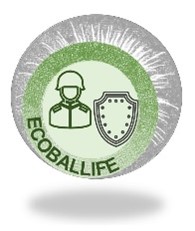 |
Research in eco-designed ballistic systems for durable lightweight protections against current and new threats in platform and personal applications |
|||
| Area | European defence | Starting date | 01/09/2023 | |
| Budget |
Total cost: 10 004 286.32 € |
Duration | 42 months | |
Abstract:
ECOBALLIFE is a project that aims to strengthen European defence capabilities and industry by developing new materials and technologies for personal and military platform protection.
This initiative will research and identify innovative solutions that can resist new threats, such as blast overpressure, laser, microwaves and STANAG 5-6 level. ECOBALLIFE will optimise existing solutions to assure reliability, durability, recyclability and cost-effectiveness of existing protection systems, while ensuring Europe’s independence in the materials supply chain.
By involving a wide range of European stakeholders, from raw material industries to validation and test facilities, and inviting non-traditional players in the defence sector to join the effort, it will foster collaboration and innovation across the EU.
The project will showcase two proofs of concept: 1) personal protection systems ballistic vests and helmets; and 2) platforms protection spall liners and Add-on Armours (AoAs) to be installed over underbelly and the crew compartment areas of vehicles systems.
AMIRES role:
AMIRES was involved in the project’s preparatory phase and negotiations. AMIRES is leading Dissemination, Communication and Exploitation. Supporting the project coordinator in Project Management.
Project partners: |
Contacts: |
|
Iñigo, AGOTE BELOKI Project Coordinator TECNALIA Email: inigo.agote(at)tecnalia.com Panagiotis CHATZIS Project manager AMIRES, s.r.o. Email: chatzis(at)amires.eu Website: www.ecoballife.eu |
 |
This project has received funding from the European Union’s Horizon Europe research and innovation programme under grant agreement No 101074905. |
Next-2Digits
 |
The next generation of sensors and imagers enabled by 2D materials digital integration |
|||
| Area | New generation of advanced electronic and photonic 2D materials-based devices, systems and sensors | Starting date | 01/10/2023 | |
| Budget |
Total cost: 5 134 570.50 € |
Duration | 39 months | |
Abstract:
Next-2Digits will tackle the challenges associated with Photonic Integrated Circuits (PICs), Optoelectronic Integrated Circuits (OEICs) and 2D materials. It will introduce a direct wafer-scale integration of graphene in PICs using two additive technologies with significant advantaged in terms of cost, material and energy saving: semi dry transfer of Graphene layers, and Laser Digital Transfer (LDT) of intact 2DM pixels.
With a consortium of 11 partners from 8 different countries, Next-2Digits benefits from the presence of well-reputed academic, research and industrial teams, whose areas of work span from graphene and 2D materials synthesis, characterization, manipulation, and integration, as well as in the fields of photonics, material science, application-based integration technologies and validation.
Next-2Digits envisions to develop the first hybrid Graphene-based photodetectors (PDs) and modulators (MDs) which will be integrated in three device demonstrators: 1) A miniaturized LiDAR; 2) PIC greenhouse gas sensor; 3) An on-chip polarization diversity receiver (PDR).
Next-2Digits is also collaborating with the GrapheneEU project, a Coordination and Support Action project, under the framework of the Graphene Flagship Initiative, to contribute to increase the expertise in the graphene field and to spread knowledge among various stakeholders.
AMIRES role:
AMIRES was involved in the project’s preparatory phase and in the negotiations. Within the project, AMIRES is responsible for the project management and leads the work package dedicated to dissemination, communication, and exploitation activities.
Project partners: |
Contacts: |
|
Ioanna ZERGIOTI Project Coordinator NTUA Email: zergioti(at)central.ntua.gr Marco MESSINA Project manager AMIRES, s.r.o. Email: messina(at)amires.eu Website: TBA |
 |
This project has received funding from the European Union’s Horizon Europe programme under grant agreement No 101120651, project Next-2Digits. |
NetZeroAICT
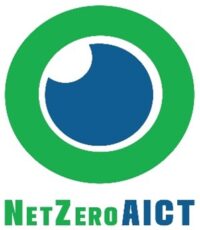 |
NetZero Artificial Intelligence Computerised Tomography |
|||
| Area | NetZero AI medical devices | Starting date | 01/12/2023 | |
| Budget |
Total cost: 3 791 075.00 € |
Duration | 48 months | |
Abstract:
Computerised Tomography (CT) scan is one of the most common medical imaging procedures in healthcare. Each year, 300 million CT scans are performed globally. Of these, around 180M include radiocontrast media (RCM).
Contrast Enhanced CTs (CECT) create a significant environmental impact, namely 42,000 tonnes of single-use packaging, 900 Tonnes of surgical steel (needles), 90,000 tonnes of plastic tubing and 150,000,000 kWh in energy consumption. These generate, on average, 9.2 kg of CO2/ scan. In addition, CECTs generate 200,000 tonnes of iodine contamination in water/yr. This is a recognised form of ‘pharmaceutical pollution’. CECTs may also harm patients: needle insertion, toxicity of iodinated RCMs to kidneys (potentially kidney failure) and allergic reactions, which in some cases can be life-threatening.
Healthcare systems are responsible for 4.4% of global CO2 emissions (2 Giga tonnes/yr.). Of this, ~3 Mega tonnes/yr. are generated from CECTs. The EU has declared its NetZero targets by 2050 through the European Green Deal.
We showed feasibility that artificial intelligence (AI, deep learning methods) can extract high level information from non-contrast CT scans and synthesise contrast ‘digitally’. This avoids the need to administer RCM for CECTs. We seek to develop and validate 5 uses cases of CT ’Digital Contrast’ during this Horizon award. By implementing ‘Digital Contrast’ for scans globally, we aim to reduce 30% of the CO2e and iodine RCM waste generated from CECTs by 2033.
NetZeroAICT has a grand vision to define a reference framework for scalable development of AI health tools for a future of sustainable health systems. This builds on our prior efforts of AICT consortium, which was established to make CT imaging safer, more efficient, more equitable and more sustainable. NetZeroAICT will accelerate the EU’s trajectory towards NetZero and advance EU’s globally recognized leadership position on healthcare sustainability.
AMIRES role:
AMIRES was involved in the project’s preparatory phase and negotiations. AMIRES is leading Dissemination and Communication. Supporting the project coordinator in Project Management.
Project partners: |
Contacts: |
|
Anders NORDELL Project Coordinator Collective Minds Radiology Email: anders(at)cmrad.com Regent LEE Project Scientific Coordinator University of Oxford Email: regent.lee(at)nds.ox.ac.uk Paganiotis CHATZIS Dissemination and Communication Manager AMIRES, s.r.o. Email: chatzis(at)amires.eu Website: www.netzeroaict.eu |
 |
This project has received funding from the European Union’s Horizon Europe research and innovation programme under grant agreement No 101136679. |
TRIATHLON
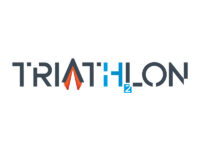 |
Thermodynamics-driven control management of hydrogen powered and electrified propulsion for aviation |
|||
| Area | Sustainable Transport – HORIZON Research and Innovation Actions | Starting date | 01/01/2024 | |
| Budget |
Total cost: 3 998 865 € |
Duration | 48 months | |
Abstract:
In order to mitigate the negative impact of human activity on the environment, significant efforts to lower carbon emissions are being pursued at both the global and European levels. Globally, the aviation industry aims for a 50% reduction of its carbon emissions by 2050, relative to 2005. In this transition towards net zero carbon emissions, novel powertrain technologies exploiting fuel cells and/or combustion systems that rely on hydrogen will play a significant role.
TRIATHLON will use the synergy between powertrain components to overcome the challenges associated with scaling up hydrogen powertrain technology to MW class. The ambition of TRIATHLON is the development of disruptive approaches to design more robust, low-maintenance, low-emmision, highly responsive hydrogen-electric powertrains for megawatt class aircraft. When the disruptive technologies developed by TRIATHLON are adopted by the industry beyond TRIATHLON, it will lead to:
1) Reduction of emissions by implementation of NOx reduction strategies like injection of exhaust water of the FC into the CC and by capturing vented and permeated hydrogen and recompressing it;
2) Elimination of the need for a cryogenic pump by using a high-pressure storage buffer for pressurisation of the fuel distribution system (making the fuel distribution more robust for turbulence as well);
3) Reduction of the power required for hydrogen conditioning using excess heat from FC and CC by means of 3D printed heat exchangers using innovative materials like ceramics, and smart thermal management;
4) Improvement of the gravimetric index of the entire powertrain by providing an effective heatsink to powertrain components, reducing the need for coolant, allowing design of a more compact and lightweight CC, as well as the need for insulation of the hydrogen storage whilst enabling a longer dormancy time.
AMIRES role:
Within the project AMIRES is responsible for communication and dissemination activities.
Project partners: |
Contacts: |
|
Julien van CAMPEN Project Coordinator TUDelf Email: J.M.J.F.vanCampen(at)tudelft.nl Bilim ATLI Project manager M2l Email: b.atli(at)m2l.nl Eleonora ALAMARO Dissemination manager AMIRES, s.r.o. Email: alamaro(at)amires.eu Website: TBA |
 |
This project has received funding from the European Union’s Horizon Europe research and innovation programme under grant agreement No 101138960. |
HyperImage
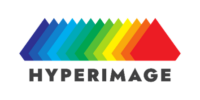 |
A universal spectral imaging sensor platform for industry, agriculture, and autonomous driving |
|||
| Area | Digital & emerging technologies for competitiveness and fit for the green deal HORIZON-IA LUMP SUM | Starting date | 01/01/2024 | |
| Budget |
Total cost: 5 558 854.47 € |
Duration | 42 months | |
Abstract:
The HyperImage project will be the first initiative to develop a universal, fast, modular and cost-effective spectral image sensing technology platform suitable for both short- and long-range imaging applications. To achieve that, HyperImage will make use of innovative photonic components including electrically tunable liquid lenses, pixel shifters, fast steering mirrors, and configurable SMD style IR micro-emitter arrays. HyperImage will integrate these components into innovative, high-performance multi- and hyperspectral snapshot and line scan cameras. AI machine learning algorithms will translate spectral image data into relevant functional products properties and detect and classify objects for more accurate decision making e.g. in autonomous driving. The technology platform will be complemented with a cloud-based spectral image analysis platform and reference data repository that enables users to continuously improve image analysis accuracy and prediction models. The HyperImage technology platform will be validated in four industrial use cases: (1) quality control in manufacturing of high power electronics; (2) crop growth monitoring for fully automated vertical farming of salads, herbs and microgreens; (3) spectral image based vision and navigation in off-road autonomous driving; (4) light-weight, high-resolution hyperspectral vision system for unmanned geo-surveillance drones. Based on that, HyperImage will provide European Industry a universal, efficient and reliable solution for object recognition, detailed product and material analysis and reliable quality control in manufacturing. HyperImage solution will lead to strong benefits for the applications such as 10-20% increase yield and reduced cost in manufacturing and vertical farming, 20% fuel saving and up to 40% increased operation speed in autonomous offroad driving; and up to 10% drone weight reduction (25 kg MTOW class) yielding 50% increased flight time through space for a larger battery.
AMIRES role:
Within the project AMIRES was involved in the preparatory phase and negotiations. Thus, AMIRES is responsible for administrative project management and for communication and dissemination.
Project partners: |
Contacts: |
|
Alexander Kabardiadi-Virkovski Fraunhofer – IWS Email: alexander.kabardiadi-virkovski(at)iws.fraunhofer.de Marina SOUZA FARIA Project manager AMIRES, The Business Innovation Management. z.ú. Email: souzafaria(at)amires.eu Website: TBA |
 |
This project has received funding from European Union’s Horizon Europe Lump Sum programme under grant agreement No 101135827. |
SPINUS
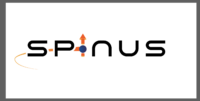 |
Spin based quantum computer and simulator |
|||
| Area | Quantum technology | Starting date | 01/01/2024 | |
| Budget |
Total cost: 10 166 376.25€ |
Duration | 48 months | |
Abstract:
SPINUS project suggests a novel strategy for scalable solid-state quantum simulation and computation hardware based on nuclear spin networks and dipole-dipole entangled electron spin qubits. With a primary focus on scalability and overcoming the limitations of existing classical methods, SPINUS seeks to establish experimental platforms for quantum simulation (>50 quantum units) and quantum computation (>10 qubits).
SPINUS sets out two key goals:
1. Creation of Quantum Simulation Platform: Leveraging optically polarized NV centers, color centers, and nuclear spin networks in diamond or SiC and by enabling the exploration of a diverse range of strongly correlated models, unconstrained by current quantum simulator capabilities.
2. Creation of Quantum Computing Platform: Scaling up platforms for solid-state quantum computing to more than 10 fully programmable qubits at ambient temperatures and investigating various architectures and techniques for initializing, controlling, and reading out spin qubits.
The project focuses on utilizing optically polarized NV (nitrogen-vacancy) centers and color centers, along with nuclear spin networks in diamond or SiC. These technologies are intended to enable the investigation of a wide range of strongly correlated models without being constrained by the capabilities of existing quantum simulators. Lastly, SPINUS aims to foster and contribute to a European quantum ecosystem by collaborating closely with start-up businesses affiliated with the project team and cooperating with related Flagship initiatives.
AMIRES role:
AMIRES was involved in the project’s preparatory phase and in the negotiations. AMIRES is leading WP6 Communication, dissemination, exploitation and supporting the coordinator in WP7 Project Management. In WP6, AMIRES leads T6.1: Dissemination and business development activities; T6.3: Exploitation and commercialization roadmaps; and T6.4: Standardization activities. Within WP7, it closely supports the project coordinator in T7.1: Strategic decision making via project General Assembly, in particular with the establishment of EAB and running its annual meetings. AMIRES spearheads T7.2: Day-to-day project management and contributes to T7.3 Data management.
Project partners: |
Contacts: |
|
Martin KOPPENHÖFER Project Coordinator IAF Email: martin.koppenhoefer(at)iaf.fraunhofer.de Stefania PAVEL Project manager AMIRES, s.r.o. Email: pavel(at)amires.eu Website: TBA |
 |
This project has received funding from the European Union’s Horizon Europe research and innovation programme under grant agreement No 101135699. |
INDHEAP
 |
Optimal Solar Systems for Industrial Heat and Power |
|||
| Area | Green research and innovation – Horizon Europe Energy | Starting date | 01/01/2024 | |
| Budget |
Total cost: 6 998 983.13 € |
Duration | 48 months | |
Abstract:
Abstract: INDHEAP project will demonstrate at TRL7 that it is worth considering solar thermal (ST) and photovoltaic (PV) energiesin combination to address the heat and power needs of mid temperature industrial processes, up to 250°C. As for it, INDHEAP will highlight the synergy between the different technologies with the development and integration of a core flexible Thermal Energy Storage, boosted by electric heaters (named e-TES) that is the key for a rational use of thermal and electrical solar renewable energy. The project will rely on the development of specific methodology and tools, tested on different case studies from industrial project’s partners, as to : 1) reduce heat and power peak demands with an optimization of the current energy efficiency for the industrial process, (best use of waste heat and analyse of demand’s elasticity) 2) define the best share between ST and PV based on technical-eco-environmental criteria 3) define the ST-PV hybrid system’s architecture, the presizing of components, and the global control maximizing the use of solar heat and power. 4) develop the specific components for the best integration and use of ST and PV plants in synergy, e.g. the flexible e-TES, but also PV panels integration enablers, low cost / mid temperature solar collectors and a smart hybrid controller for heat and power joined management. A prototype (ST up to 300 kWth, PV up to 20 kWp, e-TES up to 1 MWh) will be installed on an industrial process of lubricants blending, owned by Total Energies in Spain, to validate the concept at TRL7 with a one-year test campaign. The replicability of the demo is hundreds of equivalent sites. Finally, from results gained, a global upscaling and replication potential across the South Europe and MENA areas will be achieved to assess the societal and economic benefits of the concept to meet the Net Zero by 2050 ambitions. INDHEAP will support the EU in reducing dependency to natural gas, while reaching climate targets.
AMIRES role:
AMIRES role: Within the project AMIRES was involved in the project’s preparatory phase and negotiations and is responsible for administrative project management and for communication and dissemination.
Project partners: |
Contacts: |
|
Delphine BOURDON Project Coordinator CEA Email: delphine.bourdon(at)cea.fr Lenka BAJAROVÁ Project manager AMIRES, The Business Innovation Management Institute z.ú. Email: bajarova(at)amires.eu Website: TBA |
 |
This project has received funding from the European Union’s Horizon Europe research and innovation programme under grant agreement No 101136140. |
QUENCH
 |
Quantum-enhanced benchtop NMR spectrometer |
|||
| Area | Quantum sensing | Starting date | 01/01/2024 | |
| Budget |
Total cost: 2 556 603.75 € |
Duration | 36 months | |
Abstract:
Nuclear magnetic resonance (NMR) spectroscopy is the workhorse of modern molecular structural analysis with countless scientific applications, from materials science to drug discovery. Nevertheless, even the most modern NMR spectrometers still employ the same principles as 80 years ago, induction coils and high magnetic fields, making them bulky, expensive, and inaccessible to many potential users. However, a novel type of NMR sensor emerged recently from solid-state spin quantum systems: the nitrogen-vacancy (NV) center in diamond, which has demonstrated unparalleled sensitivities in detecting NMR signals. In this proposal, we aim to significantly enhance the sensitivity of modern benchtop NMR spectrometers by several orders of magnitude. We will achieve this improvement by combining the NMR technology field with cutting-edge quantum sensing, employing improved NV-diamond materials, advanced microwave antennas, novel pulse sequences, and quantum control protocols. The goal is to achieve complete control and protection from the environmental noise of the NV-spin state, incorporating quantum memories and logical operations to reach radiofrequency sensitivities well beyond those of classical NMR sensors. The quantum-enhanced benchtop NMR
spectrometer will be applied and validated in an analytical chemistry lab environment to demonstrate record sensitivities in molecular analysis enabled by quantum technology, with potential applications in quality control, environmental monitoring, medical diagnostics, online monitoring of chemical reactors, and materials discovery.
AMIRES role:
Within the project, AMIRES is responsible for the project management and leads the work package dedicated to dissemination.
Project partners: |
Contacts: |
|
Dominik BUCHER Project Coordinator TUM Email: dominik.bucher(at)tum.de Jana MWANGI Project manager AMIRES, s.r.o. Email: mwangij(at)amires.eu Website: TBA |
 |
This project has received funding from the European Union’s Horizon Europe research and innovation programme under grant agreement No 101135742. |






